10/02/2023 Portland (link to here)


 Richard ran the half marathon yesterday with a time of 3:05, placing 3 out of 6 in the 80-120 age
group. Sally, Donna, Darchelle and I chased him around the course and managed to intercept him a
couple of times. He looked and felt good out on the course and afterwards was stiff but not too
sore. We were all relieved, and I think he was too, that he didn't attempt the marathon this year,
though we were all a little sad as well. It was the first time in 10 years that he has not run the
full marathon so the half was a bit of a letdown. On the other hand, he finished four hours earlier
than he would have had he run the full so we were able to enjoy a leisurely visit over lunch in our
spacious room with sunshine (and some traffic noise) streaming in the open doorway.
Richard ran the half marathon yesterday with a time of 3:05, placing 3 out of 6 in the 80-120 age
group. Sally, Donna, Darchelle and I chased him around the course and managed to intercept him a
couple of times. He looked and felt good out on the course and afterwards was stiff but not too
sore. We were all relieved, and I think he was too, that he didn't attempt the marathon this year,
though we were all a little sad as well. It was the first time in 10 years that he has not run the
full marathon so the half was a bit of a letdown. On the other hand, he finished four hours earlier
than he would have had he run the full so we were able to enjoy a leisurely visit over lunch in our
spacious room with sunshine (and some traffic noise) streaming in the open doorway.


 At one point Richard asked me if I had felt inspired by seeing all the runners out on the course.
My mouth was full so I was unable to answer before the conversation moved on to other topics and I
forgot to return to his question before the weekend was over. What I would have told him is that
when I try to imagine running I can only picture myself collapsing on the pavement in pain, drooling
as I gasp for air. In my dreams though I run, and also walk, cycle, swim, ski snowboard, drive,
hug and rarely, fly, even though when I am awake I
can barely remember what those activities (other than flying, which I never did) felt like.
At one point Richard asked me if I had felt inspired by seeing all the runners out on the course.
My mouth was full so I was unable to answer before the conversation moved on to other topics and I
forgot to return to his question before the weekend was over. What I would have told him is that
when I try to imagine running I can only picture myself collapsing on the pavement in pain, drooling
as I gasp for air. In my dreams though I run, and also walk, cycle, swim, ski snowboard, drive,
hug and rarely, fly, even though when I am awake I
can barely remember what those activities (other than flying, which I never did) felt like.
While we were eating lunch on Sunday afternoon a very rare Nazca Booby was photographed in Puget Sound north of Nisqually +. Figuring that people would be looking for it Monday morning, we made plans for an early departure but though we made it out by eight, we were still an hour late. The booby was last seen at 9:10 AM heading north into the Tacoma Narrows and we didn't reach Nisqually until 10:10 AM. We thought we might be able to intercept it by scoping from Titlow Park. Marcus R had the same idea so he and Darchelle peered through the drizzle with their spotting scopes while I sat in the car and to listened to the last few hours of Lessons in Chemistry. Delia had recommended it to us and I found it so engaging that I might just listen to it all over again.

Richard at the start

With Donna around mile 7

Running with Sally around mile 10

Richard at the finish with Donna

Richard at the finish with family

Richard enjoying his reward
While we were eating lunch on Sunday afternoon a very rare Nazca Booby was photographed in Puget Sound north of Nisqually +. Figuring that people would be looking for it Monday morning, we made plans for an early departure but though we made it out by eight, we were still an hour late. The booby was last seen at 9:10 AM heading north into the Tacoma Narrows and we didn't reach Nisqually until 10:10 AM. We thought we might be able to intercept it by scoping from Titlow Park. Marcus R had the same idea so he and Darchelle peered through the drizzle with their spotting scopes while I sat in the car and to listened to the last few hours of Lessons in Chemistry. Delia had recommended it to us and I found it so engaging that I might just listen to it all over again.
10/03/2023 Nazca Booby (link to here)
When neither we nor anyone else found the Nazca Booby yesterday afternoon, we retained some hope that it might have remained undetected in the drizzle somewhere in the Nisqually Reach m+. That doesn't mean that I had much hope of seeing it myself. It had generally remained well offshore, visible only through scope or binoculars, and for the past month I have been finding my inability to use those instruments particularly frustrating. Had it been up to me, we would not have tried a second time for the bird, even after it was reported off Luhr Beach again this morning. Fortunately it wasn't just up to me.
Darchelle rightly concluded that since the bird was being seen this morning, we should not wait until tomorrow to go looking for it. We left immediately. Ed and Delia were waiting for us when we arrived at Luhr Beach. The Booby was not. They had seen it earlier as had Nathan W and others standing on the boat launch ramp scoping west across the reach where the bird was believed to be. It was about an hour later that Delia spotted the Booby flying west across the channel to our northeast. Everyone followed it with scope or binoculars as it passed the southern tip of Anderson Island about a mile northeast of us and continued west along the shore of the island. Everyone but me, that is. Although others could see it even without optics, I could not.

 The Booby eventually did a U-turn and retraced its route back to the wooded shoreline east of the
Nisqually River delta where, with Darchelle holding the binoculars for me, I was able to see the
white spot moving against the dark trees in the background. Not very satisfying but better than not
seeing it at all. For the rest of the afternoon the booby repeated that flight pattern, ranging
west past Anderson
Island l+ and back again every hour or so, and each time it did a different group of birders
followed its course. The bird mixed it up a little now and then. One time it drifted across the
channel on the tide and that time Darchelle was able to configure the scope on the wheelchair so I
could get a view of the bird sitting on the water, and a few minutes later, flying. Even from a
mile away through the scope, it was a striking sight, relatively large and entirely white with
contrasting black primaries and secondaries and a long tapered orange bill. What I appreciated most
about the sight of that bird though, was that I was actually able to see it well enough to distinguish
it from the local gulls.
The Booby eventually did a U-turn and retraced its route back to the wooded shoreline east of the
Nisqually River delta where, with Darchelle holding the binoculars for me, I was able to see the
white spot moving against the dark trees in the background. Not very satisfying but better than not
seeing it at all. For the rest of the afternoon the booby repeated that flight pattern, ranging
west past Anderson
Island l+ and back again every hour or so, and each time it did a different group of birders
followed its course. The bird mixed it up a little now and then. One time it drifted across the
channel on the tide and that time Darchelle was able to configure the scope on the wheelchair so I
could get a view of the bird sitting on the water, and a few minutes later, flying. Even from a
mile away through the scope, it was a striking sight, relatively large and entirely white with
contrasting black primaries and secondaries and a long tapered orange bill. What I appreciated most
about the sight of that bird though, was that I was actually able to see it well enough to distinguish
it from the local gulls.
When neither we nor anyone else found the Nazca Booby yesterday afternoon, we retained some hope that it might have remained undetected in the drizzle somewhere in the Nisqually Reach m+. That doesn't mean that I had much hope of seeing it myself. It had generally remained well offshore, visible only through scope or binoculars, and for the past month I have been finding my inability to use those instruments particularly frustrating. Had it been up to me, we would not have tried a second time for the bird, even after it was reported off Luhr Beach again this morning. Fortunately it wasn't just up to me.
Darchelle rightly concluded that since the bird was being seen this morning, we should not wait until tomorrow to go looking for it. We left immediately. Ed and Delia were waiting for us when we arrived at Luhr Beach. The Booby was not. They had seen it earlier as had Nathan W and others standing on the boat launch ramp scoping west across the reach where the bird was believed to be. It was about an hour later that Delia spotted the Booby flying west across the channel to our northeast. Everyone followed it with scope or binoculars as it passed the southern tip of Anderson Island about a mile northeast of us and continued west along the shore of the island. Everyone but me, that is. Although others could see it even without optics, I could not.

Nazca Booby off Anderson Island, from Luhr Beach

Birders watching the the Nazca Booby, Luhr Beach
10/6/2023 Sunrise (link to here)


 This morning Darchelle brewed up some of the special Civet cat poop coffee which our neighbor Z
brought back for us from Indonesia. Apparently the beans are collected from the feces of Civets
after the cats have been feasting on coffee cherries, then are washed, dried and roasted as with
more customary production methods. At some point during Dutch colonial rule when native farmers
were required to sell their entire coffee production to their European rulers, the locals realized
that the beans they could pick out of Civet poop were both usable and exempt from the coffee sales
rules. Nowadays the Civets are mostly kept in captivity and fed only coffee cherries to optimize
their productivity, if not their health and happiness, and the coffee is too expensive for the
locals to drink.
This morning Darchelle brewed up some of the special Civet cat poop coffee which our neighbor Z
brought back for us from Indonesia. Apparently the beans are collected from the feces of Civets
after the cats have been feasting on coffee cherries, then are washed, dried and roasted as with
more customary production methods. At some point during Dutch colonial rule when native farmers
were required to sell their entire coffee production to their European rulers, the locals realized
that the beans they could pick out of Civet poop were both usable and exempt from the coffee sales
rules. Nowadays the Civets are mostly kept in captivity and fed only coffee cherries to optimize
their productivity, if not their health and happiness, and the coffee is too expensive for the
locals to drink.
We had been saving it for a special occasion (rarely a good idea) but it proved to be less special than we had hoped. Although somehow different from our usual brews, it did not have much fragrance and was too finely ground to drip effectively. I suspect it should be prepared Turkish style, that is, mixed with cold water (about 2T per cup) and brought to a boil in a small saucepan over medium heat, then served sweetened or unsweetened with the foam on top. We will have to try that next time.
As we were leaving for Sunrise around 5 PM I had Darchelle take a few photos of our big pumpkin. Our nephew Tommy grew it and named it "Big Jim", then Sally bought it from him and gave it to us last weekend in Portland. We secured it with the seatbelt on the back seat of the car for the drive home then Marco helped Darchelle lug it over to the garden box where it resides because it was either too big for the front porch or too heavy to carry up the front steps.
Having heard Boreal Owls at Hart's Pass last month we did not need them for the year but since they've been being seen up at Sunrise recently, we thought we would see if we could see them too. Unfortunately despite several hours of listening for them along the last few miles of road before the Sunrise Visitors Center, we neither saw nor heard any owls at all. Conditions appeared ideal - a mild clear night with no moon and very little wind - but the owls just weren't talking. We had a good time anyhow visiting with Khanh and his friend Richard, whom we ran into at the Sunrise Point overlook and with whom we shared owl tales and techniques. He really knows owls, as evidenced by his success the following evening when he heard half a dozen and even got a nice photo of one of them.

Civet Poop Coffee

Big Jim the Pumpkin, Seattle

Crest Trail Lodge, Packwood
We had been saving it for a special occasion (rarely a good idea) but it proved to be less special than we had hoped. Although somehow different from our usual brews, it did not have much fragrance and was too finely ground to drip effectively. I suspect it should be prepared Turkish style, that is, mixed with cold water (about 2T per cup) and brought to a boil in a small saucepan over medium heat, then served sweetened or unsweetened with the foam on top. We will have to try that next time.
As we were leaving for Sunrise around 5 PM I had Darchelle take a few photos of our big pumpkin. Our nephew Tommy grew it and named it "Big Jim", then Sally bought it from him and gave it to us last weekend in Portland. We secured it with the seatbelt on the back seat of the car for the drive home then Marco helped Darchelle lug it over to the garden box where it resides because it was either too big for the front porch or too heavy to carry up the front steps.
Having heard Boreal Owls at Hart's Pass last month we did not need them for the year but since they've been being seen up at Sunrise recently, we thought we would see if we could see them too. Unfortunately despite several hours of listening for them along the last few miles of road before the Sunrise Visitors Center, we neither saw nor heard any owls at all. Conditions appeared ideal - a mild clear night with no moon and very little wind - but the owls just weren't talking. We had a good time anyhow visiting with Khanh and his friend Richard, whom we ran into at the Sunrise Point overlook and with whom we shared owl tales and techniques. He really knows owls, as evidenced by his success the following evening when he heard half a dozen and even got a nice photo of one of them.
10/7/2023 Neah Bay (link to here)

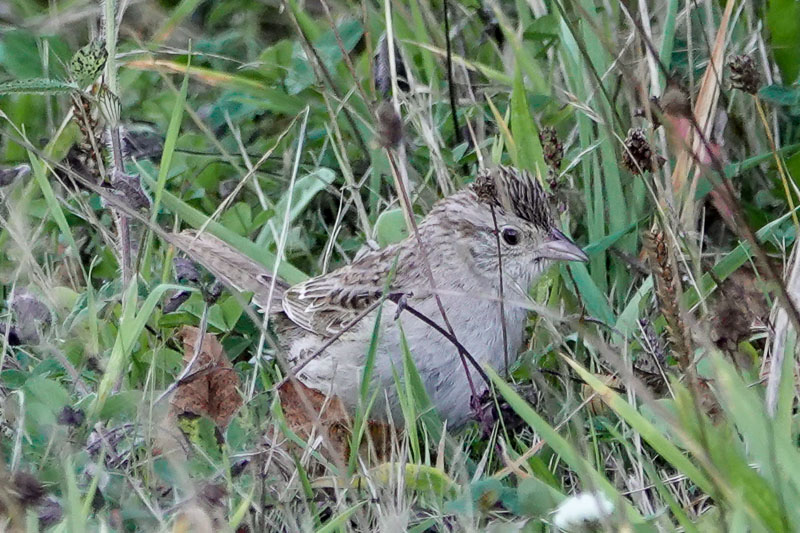
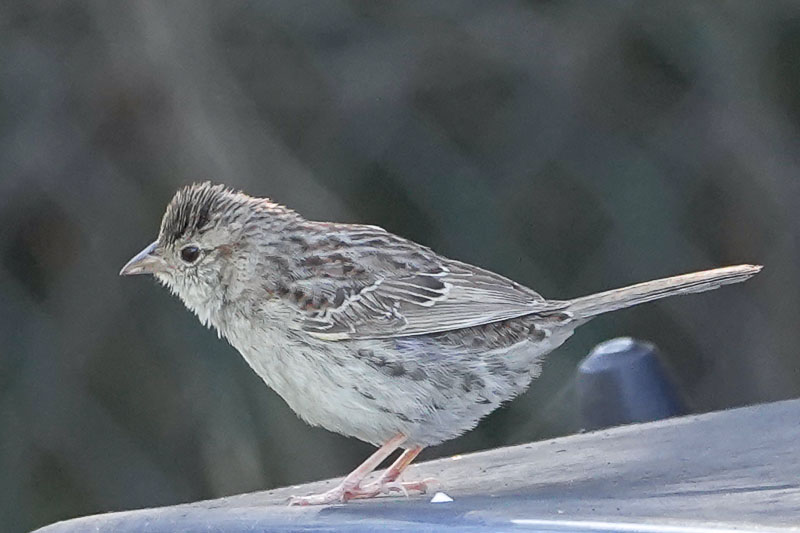 We drove out to Neah Bay from Packwood today in pursuit of the first Cassin's Sparrow ever found in
the state of Washington. Our plan had been to continue our owl search down in Skamania County but
since the sparrow would be a state bird for us, and a life bird for Darchelle, it took priority.
Jayson D reported it foraging around a red pickup truck in Ba'adah Village this morning around 9 AM
and Liam texted us about it a half-hour later. We left the Crest Trail Motel a half-hour after that
and found the sparrow still foraging around the red pickup truck l+ when we reached it at 3:30 PM. Cara
B and Asta T
arrived shortly after us and joined Darchelle and Keith B in
trying for clear views and photos of the rather nondescript bird while I waited in the car, though
I too had a decent view when the sparrow at one point landed near my door.
We drove out to Neah Bay from Packwood today in pursuit of the first Cassin's Sparrow ever found in
the state of Washington. Our plan had been to continue our owl search down in Skamania County but
since the sparrow would be a state bird for us, and a life bird for Darchelle, it took priority.
Jayson D reported it foraging around a red pickup truck in Ba'adah Village this morning around 9 AM
and Liam texted us about it a half-hour later. We left the Crest Trail Motel a half-hour after that
and found the sparrow still foraging around the red pickup truck l+ when we reached it at 3:30 PM. Cara
B and Asta T
arrived shortly after us and joined Darchelle and Keith B in
trying for clear views and photos of the rather nondescript bird while I waited in the car, though
I too had a decent view when the sparrow at one point landed near my door.
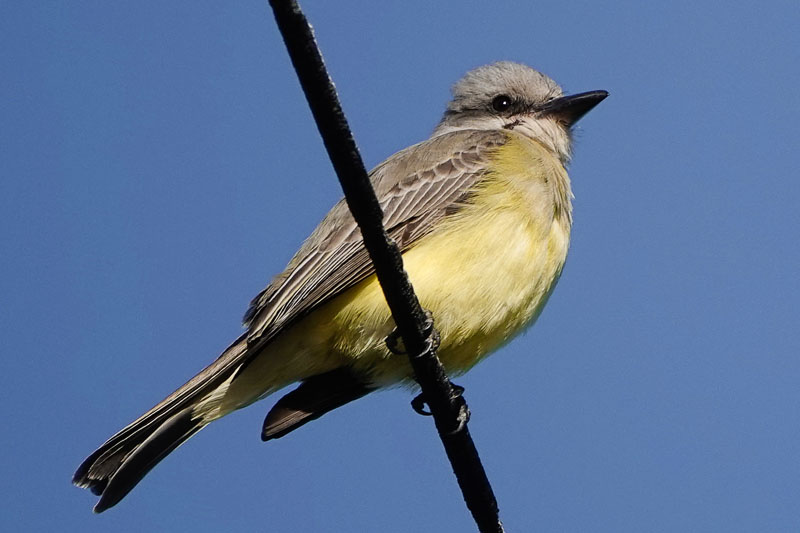

 Before we had made it very far out of Packwood I had decided that the best possible outcome of this
day would involve finding the Cassin's Sparrow immediately upon arriving in Neah Bay, getting a view
of the bird (me) and a few photos (Darchelle), spotting a Tropical Kingbird on a wire somewhere in
town a few minutes later (both of us) and departing Neah Bay in time to catch the 7:40 PM ferry back
across the Sound to Edmonds. It was possible, but by no means probable.
Before we had made it very far out of Packwood I had decided that the best possible outcome of this
day would involve finding the Cassin's Sparrow immediately upon arriving in Neah Bay, getting a view
of the bird (me) and a few photos (Darchelle), spotting a Tropical Kingbird on a wire somewhere in
town a few minutes later (both of us) and departing Neah Bay in time to catch the 7:40 PM ferry back
across the Sound to Edmonds. It was possible, but by no means probable.

 And yet, that is exactly what happened, except for the part about departing Neah Bay. Darchelle
wanted to spend the night in case something else rare turned up the next day. It being Saturday
night during the peak of the fall migration, I expected all of the limited lodging options in Neah
Bay to be fully occupied by either birdwatchers or surfers (the other popular fall activity in Neah
Bay) so I agreed to stay if she could find a place in town. She did, at the Harmony Cabins. They
don't appear in a Google search for "Neah Bay lodging" but their phone number (360-640-3008) is
posted on a tree on the way into town. When she called no one had answered but while we were parked
out front the manager walked by and when she asked, he told her he had one accessible room
available. It was a good one too, cozy and warm with a firm bed and a soft pillow and an accessible
and fairly tall toilet. Apparently because they are not on the Internet, they don't tend to get booked
in advance.
And yet, that is exactly what happened, except for the part about departing Neah Bay. Darchelle
wanted to spend the night in case something else rare turned up the next day. It being Saturday
night during the peak of the fall migration, I expected all of the limited lodging options in Neah
Bay to be fully occupied by either birdwatchers or surfers (the other popular fall activity in Neah
Bay) so I agreed to stay if she could find a place in town. She did, at the Harmony Cabins. They
don't appear in a Google search for "Neah Bay lodging" but their phone number (360-640-3008) is
posted on a tree on the way into town. When she called no one had answered but while we were parked
out front the manager walked by and when she asked, he told her he had one accessible room
available. It was a good one too, cozy and warm with a firm bed and a soft pillow and an accessible
and fairly tall toilet. Apparently because they are not on the Internet, they don't tend to get booked
in advance.
Our room secured, we drove out to the Tsoo-Yess Beach Road l+ and looked for vagrants until the sun dropped behind the wall of fog looming offshore.
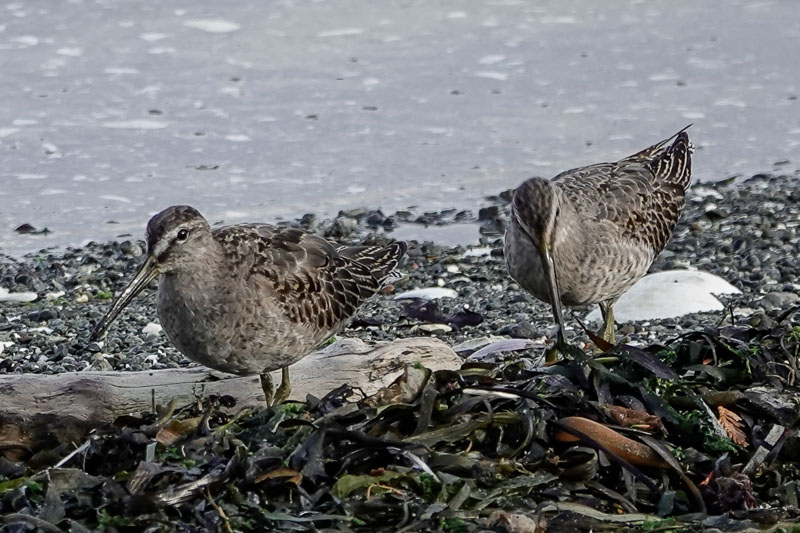

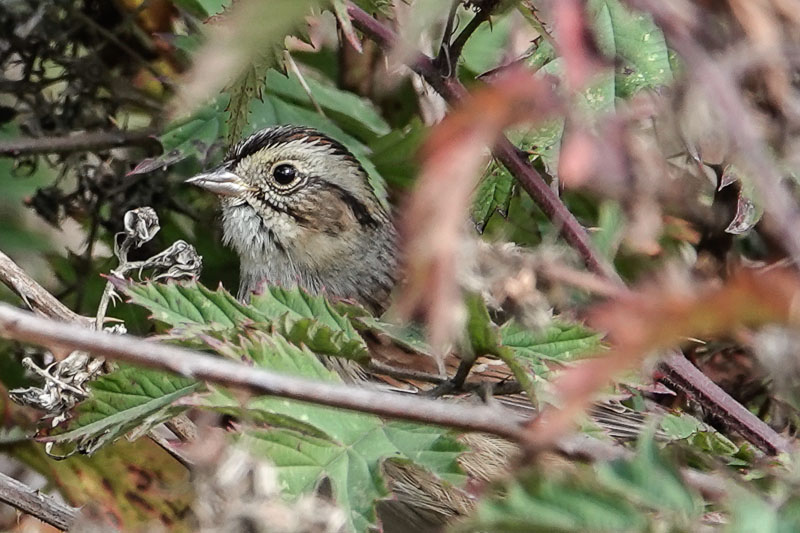 In the morning we arose about an hour after the sun did, giving the stratus overcast time to break up
before we ventured out to bird bay and town l+ for the next 6 hours. Again we found no vagrants though Darchelle
did discover the first Swamp Sparrow of the season out the base of the jetty. Our total of 60 species
was almost respectable.
In the morning we arose about an hour after the sun did, giving the stratus overcast time to break up
before we ventured out to bird bay and town l+ for the next 6 hours. Again we found no vagrants though Darchelle
did discover the first Swamp Sparrow of the season out the base of the jetty. Our total of 60 species
was almost respectable.
We missed the 7:40 ferry but spotted our first Kitsap County Barred Owl on a light post in the parking lot while we waited for the 8:30.

Cassin's Sparrow location, Ba'adah Village, Neah Bay

Cassin's Sparrow, Ba'adah Village, Neah Bay

Cassin's Sparrow, Ba'adah Village, Neah Bay

Tropical Kingbird, Neah Bay

Sunset at Tsoo Yess Beach, Neah Bay

Savannah Sparrow, Tsoo Yess Beach, Neah Bay

Room 5 at the Harmony Cabins, Neah Bay

Harmony Cabins, Neah Bay
Our room secured, we drove out to the Tsoo-Yess Beach Road l+ and looked for vagrants until the sun dropped behind the wall of fog looming offshore.

Short-billed Dowitchers, Neah Bay

View west from the jetty, Neah Bay

Swamp Sparrow, Neah Bay
We missed the 7:40 ferry but spotted our first Kitsap County Barred Owl on a light post in the parking lot while we waited for the 8:30.
10/14/2023 Eclipse (link to here)


 A Common Poorwill has been hanging out in the South Meadow of Discovery Park all week. Although
they are fairly common in brushy open forest on the east slopes of the Cascades, we have never seen
one on the west side so Darchelle, accompanied by Monica, drove over there the evening before last
and joined the knot of birders waiting at dusk for it to appear. Monica alone spotted it first but
Darchelle subsequently followed the bird with her flashlight beam so that everyone else had a good
look. I stayed home on the computer.
A Common Poorwill has been hanging out in the South Meadow of Discovery Park all week. Although
they are fairly common in brushy open forest on the east slopes of the Cascades, we have never seen
one on the west side so Darchelle, accompanied by Monica, drove over there the evening before last
and joined the knot of birders waiting at dusk for it to appear. Monica alone spotted it first but
Darchelle subsequently followed the bird with her flashlight beam so that everyone else had a good
look. I stayed home on the computer.
Yesterday evening Sally, visiting from Walla Walla, and I joined Darchelle on a return trip to Discovery Park so I could see the bird and Darchelle could try for photos. It was a reunion of sorts with some of the birders who helped me last year - Raphael F, Greg H, Warren H and Katie V - and others whom we have met in the field on various occasions; I enjoyed the visiting but missed the initial appearance of the bird which apparently flew over us while enough light still remained to pick it out against nearby trees. Darkness enveloped us and bats emerged overhead while birders' flashlights flickered around the meadow like fireflies and we waited. Suddenly a bird, the bird, flew very low over my head making a series of short, soft "wik" calls then plopped down into the middle of the trail about 50 feet up from us. Illuminated by our flashlight beams it fluttered up into the night in pursuit of invisible insects, returning to the trail several times before disappearing for good, though apparently Wayne P and others who lingered for another hour were rewarded with even better views.
As exciting as the Poorwill sighting was, it was eclipsed by the annular eclipse this morning. We hadn't heard much about it; I don't think I even realized it was happening until it was nearly total. Totality in Seattle meant the sun was about 80% obscured but the remaining 20% compensated pretty well for the missing 80%. The living room and dining room, where the lights were off, appeared slightly darker than normal for a sunny morning but in the backyard the sun was casting its usual shadows and the usual House Finches were monopolizing the feeders. Only the photos Sally and Darchelle took with their phones revealed that something was amiss.

Sally and Supper

Annular eclipse and lens flare, Seattle

Inside during the eclipse, Seattle
Yesterday evening Sally, visiting from Walla Walla, and I joined Darchelle on a return trip to Discovery Park so I could see the bird and Darchelle could try for photos. It was a reunion of sorts with some of the birders who helped me last year - Raphael F, Greg H, Warren H and Katie V - and others whom we have met in the field on various occasions; I enjoyed the visiting but missed the initial appearance of the bird which apparently flew over us while enough light still remained to pick it out against nearby trees. Darkness enveloped us and bats emerged overhead while birders' flashlights flickered around the meadow like fireflies and we waited. Suddenly a bird, the bird, flew very low over my head making a series of short, soft "wik" calls then plopped down into the middle of the trail about 50 feet up from us. Illuminated by our flashlight beams it fluttered up into the night in pursuit of invisible insects, returning to the trail several times before disappearing for good, though apparently Wayne P and others who lingered for another hour were rewarded with even better views.
As exciting as the Poorwill sighting was, it was eclipsed by the annular eclipse this morning. We hadn't heard much about it; I don't think I even realized it was happening until it was nearly total. Totality in Seattle meant the sun was about 80% obscured but the remaining 20% compensated pretty well for the missing 80%. The living room and dining room, where the lights were off, appeared slightly darker than normal for a sunny morning but in the backyard the sun was casting its usual shadows and the usual House Finches were monopolizing the feeders. Only the photos Sally and Darchelle took with their phones revealed that something was amiss.
10/15/2023 Neah Bay (link to here)
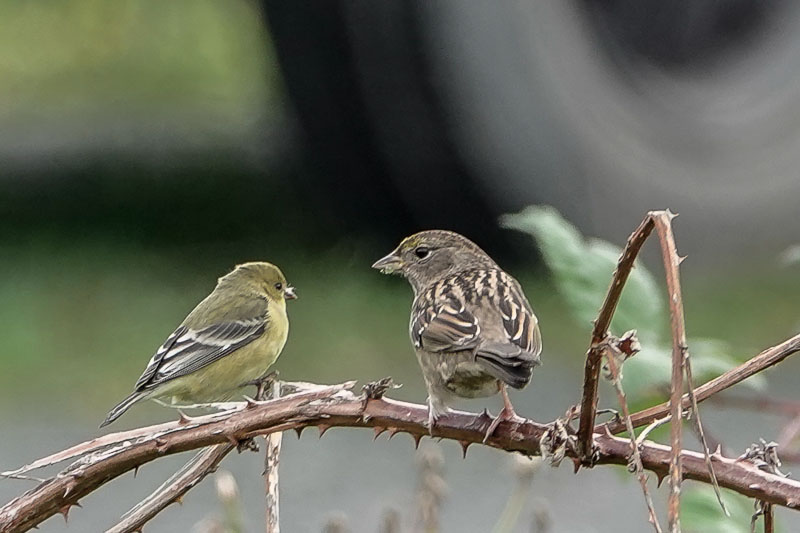
 We had planned for several weeks to visit Neah Bay this weekend so yesterday morning after the eclipse
we left Sally to the peace and quiet of her own company while we made the trek out to the northwest
corner of the continental USA. We arrived in time to spot the Indigo Bunting in the RV Park where it had
initially been discovered 10 hours earlier. A male in basic plumage, it was as brown as the bird we saw
earlier this summer was blue.
We had planned for several weeks to visit Neah Bay this weekend so yesterday morning after the eclipse
we left Sally to the peace and quiet of her own company while we made the trek out to the northwest
corner of the continental USA. We arrived in time to spot the Indigo Bunting in the RV Park where it had
initially been discovered 10 hours earlier. A male in basic plumage, it was as brown as the bird we saw
earlier this summer was blue.

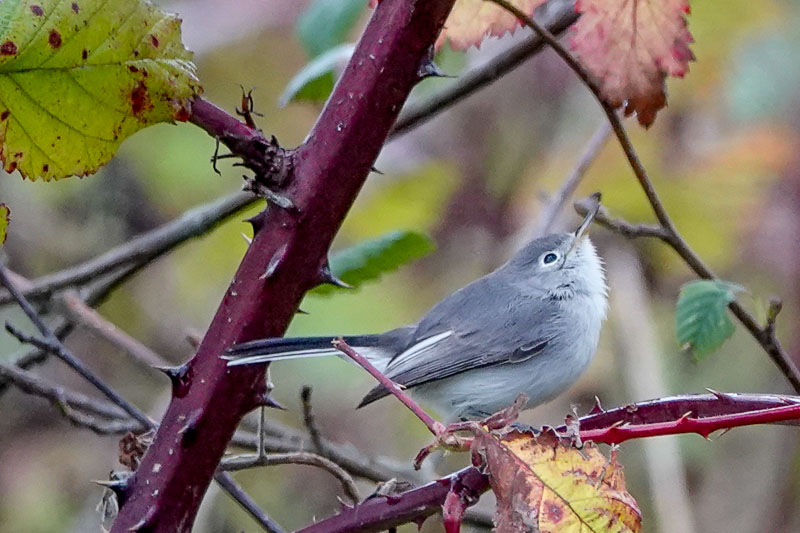
 We did well today, accumulating a total count of 77 or so species. We birded the
Wa'atch River Valley l+ in the morning
and the town and bay l+ in the afternoon.
The Lesser Goldfinch was new for us in the county and the Lapland Longspur, as emblematic of autumn
(at least for Pacific Northwest birders) as orange pumpkins, was effectively new for me for the
year. The Blue-gray Gnatcatcher, while not new on any of our lists, is a Neah Bay fall specialty
which we were pleased to find on our own.
We did well today, accumulating a total count of 77 or so species. We birded the
Wa'atch River Valley l+ in the morning
and the town and bay l+ in the afternoon.
The Lesser Goldfinch was new for us in the county and the Lapland Longspur, as emblematic of autumn
(at least for Pacific Northwest birders) as orange pumpkins, was effectively new for me for the
year. The Blue-gray Gnatcatcher, while not new on any of our lists, is a Neah Bay fall specialty
which we were pleased to find on our own.
Lots of other birders were in town including Marcus and Heather, who tried to help us spot a particularly elusive Varied Thrush, and Liam and Elizabeth, who directed us to a Palm Warbler so Darchelle could get a fall photo of that classic Neah Bay target. In pursuit of the warbler we came across a knot of birders along the waterfront near the Minimart so we stopped to see what was up. Liam and a couple others were beating the bushes in search of a possible Sedge Wren. Nancy Butler was handing out a little tract urging her distracted audience to prepare for the rapture. Katie V gave her copy to Darchelle who had stepped out to try for a photo of the wren while I stayed in the car and watched. Marcus, then Elizabeth, and then Brad W, came over and talked with me while the wren was determined to be a Marsh rather than a Sedge. The opportunity to visit was nice.

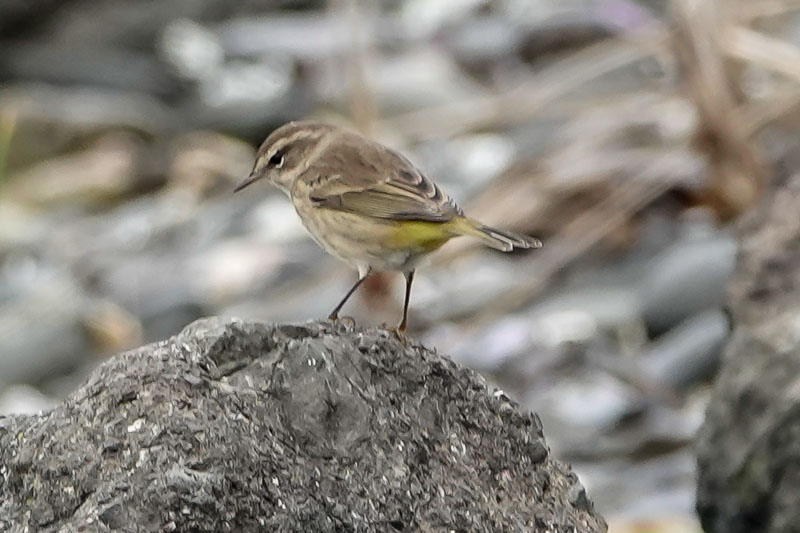
 Staying in the accessible cabin at Hobuck Beach has been a special treat for us in the past few
years so last weekend when we checked and found it was available due to a recent cancellation, we
booked it for this weekend. It was my idea, and my mistake, to book it for tonight as well as for
last night. The bed was too soft for me in my weakened condition and I passed a memorably uncomfortable
couple of hours waiting for dawn before falling asleep again. A forecast of heavy rain for tomorrow was
sufficient to induce us to sacrifice the nonrefundable $215 we had already paid for tonight and make
the long trip home this evening after the long day of birding.
Staying in the accessible cabin at Hobuck Beach has been a special treat for us in the past few
years so last weekend when we checked and found it was available due to a recent cancellation, we
booked it for this weekend. It was my idea, and my mistake, to book it for tonight as well as for
last night. The bed was too soft for me in my weakened condition and I passed a memorably uncomfortable
couple of hours waiting for dawn before falling asleep again. A forecast of heavy rain for tomorrow was
sufficient to induce us to sacrifice the nonrefundable $215 we had already paid for tonight and make
the long trip home this evening after the long day of birding.

Lesser Goldfinch and Golden-crowned Sparrow, Ba'adah Village, Neah Bay

Indigo Bunting, Neah Bay

Townsend's Warbler, Ba'adah Village, Neah Bay

Blue-gray Gnatcatcher, Ba'adah Village, Neah Bay

Lapland Longspur, Ba'adah Village, Neah Bay
Lots of other birders were in town including Marcus and Heather, who tried to help us spot a particularly elusive Varied Thrush, and Liam and Elizabeth, who directed us to a Palm Warbler so Darchelle could get a fall photo of that classic Neah Bay target. In pursuit of the warbler we came across a knot of birders along the waterfront near the Minimart so we stopped to see what was up. Liam and a couple others were beating the bushes in search of a possible Sedge Wren. Nancy Butler was handing out a little tract urging her distracted audience to prepare for the rapture. Katie V gave her copy to Darchelle who had stepped out to try for a photo of the wren while I stayed in the car and watched. Marcus, then Elizabeth, and then Brad W, came over and talked with me while the wren was determined to be a Marsh rather than a Sedge. The opportunity to visit was nice.

Heather and Marcus on the Boom Road, Neah Bay

Palm Warbler, Neah Bay

House Sparrow, Neah Bay
10/16/2023 Home again (link to here)

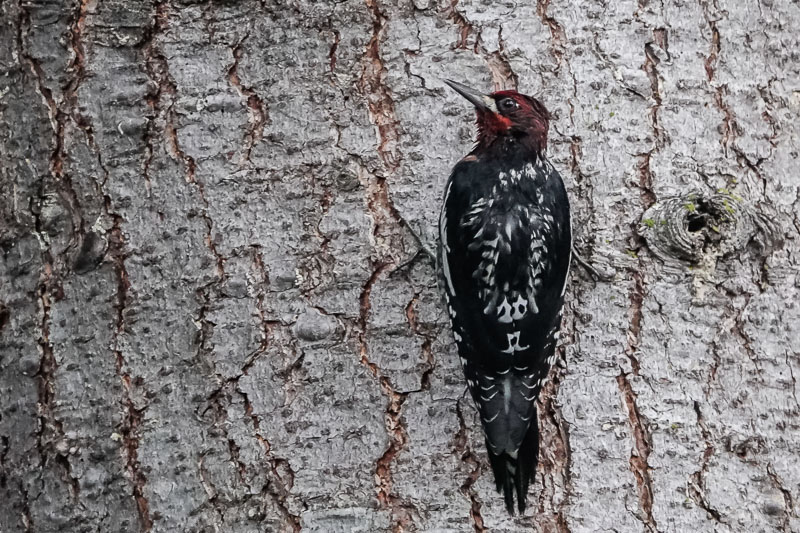
 We did a backyard
checklist l+ this morning while tasting Astoria coffees in the jungle room and in so doing, added
two species to our year list for King County. I guess we have not done much birding close to home
this year.
We did a backyard
checklist l+ this morning while tasting Astoria coffees in the jungle room and in so doing, added
two species to our year list for King County. I guess we have not done much birding close to home
this year.
The most interesting bird of the morning was a Cassiar Junco Junco hyemalis cismontanus, a form of the eastern Slate-colored subspecies which breeds in the mountains of northwestern Canada and is found scattered across the western US during the winter. Compared to our local Oregon juncos, the Cassiar appears mostly gray with a dark gray hood, brownish back and gray rather than pinkish flanks. The hood is somewhat darker than the sides and back and the boundary between the gray sides and the white belly is indistinct. Females are generally more brown than males. The typical Slate-colored Junco is generally dark gray above with no contrast between hood and back or sides but a sharp contrast between the sides and the belly. We get those in the Pacific Northwest now and then too, though less frequently then the Cassiars.

House Sparrow, Ravenna, Seattle

Red-breasted Sapsucker, Ravenna, Seattle

Dark-eved (Cassiar) Junco, Ravenna, Seattle
The most interesting bird of the morning was a Cassiar Junco Junco hyemalis cismontanus, a form of the eastern Slate-colored subspecies which breeds in the mountains of northwestern Canada and is found scattered across the western US during the winter. Compared to our local Oregon juncos, the Cassiar appears mostly gray with a dark gray hood, brownish back and gray rather than pinkish flanks. The hood is somewhat darker than the sides and back and the boundary between the gray sides and the white belly is indistinct. Females are generally more brown than males. The typical Slate-colored Junco is generally dark gray above with no contrast between hood and back or sides but a sharp contrast between the sides and the belly. We get those in the Pacific Northwest now and then too, though less frequently then the Cassiars.
10/18/2023 Tokeland (link to here)
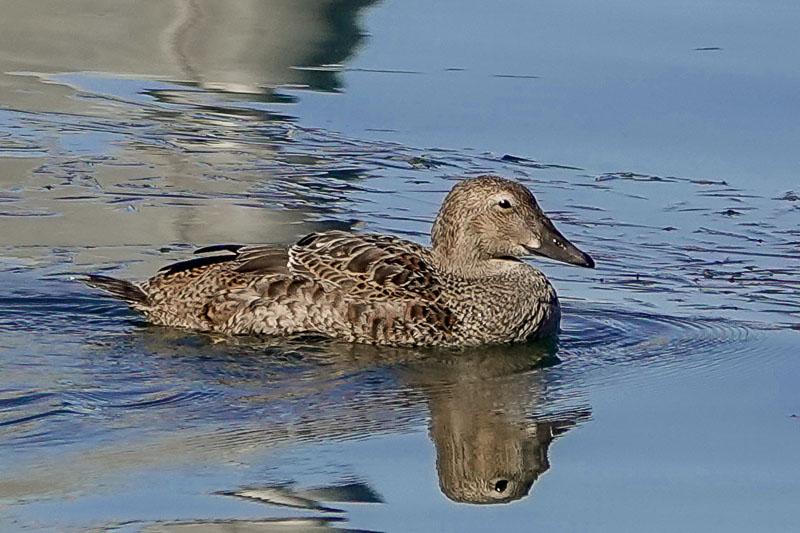
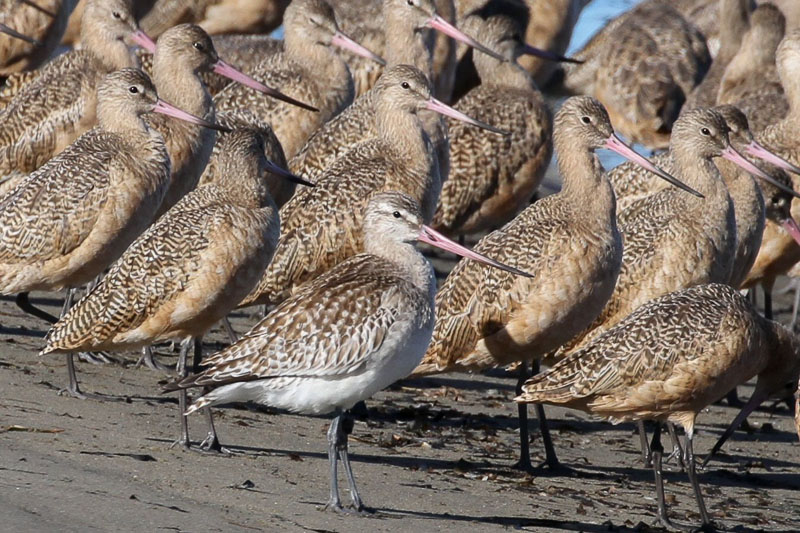 We had planned, or at least I had hoped, to spend most of today at home then head south to the
Columbia Gorge later in the afternoon, reaching Skamania County in time to do a little owl hunting
in the evening. The discovery of a King Eider in the Tokeland Marina yesterday prompted a change in
our plans. Although a female, a stolid no-nonsense duck which lacks the spectacular color and
pattern of the breeding male, the Eider is nonetheless rare and therefore appealing enough to entice
us out of the house early in the morning. Early by our standards anyhow.
We had planned, or at least I had hoped, to spend most of today at home then head south to the
Columbia Gorge later in the afternoon, reaching Skamania County in time to do a little owl hunting
in the evening. The discovery of a King Eider in the Tokeland Marina yesterday prompted a change in
our plans. Although a female, a stolid no-nonsense duck which lacks the spectacular color and
pattern of the breeding male, the Eider is nonetheless rare and therefore appealing enough to entice
us out of the house early in the morning. Early by our standards anyhow.


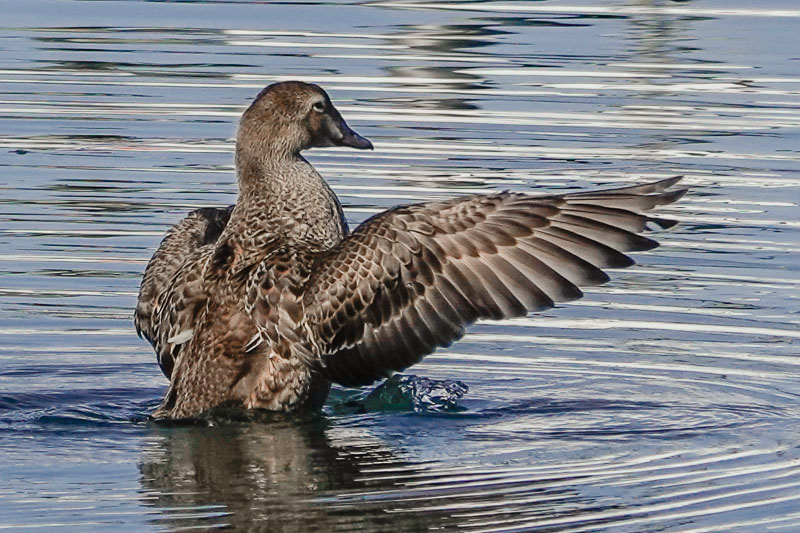 We left shortly after 9 AM. Our friends Ed and Delia left about two hours ahead of us and Andy and
Ellen left Yakima about four hours before that. We all ate lunch together at a concrete picnic table
overlooking the marina and the collection of godwits gathered on the beach below us. Ellen and Delia
took turns wheeling me around and feeding me lunch while Darchelle took a couple of appointments in the
car. Lunch was delicious, particularly the clam chowder augmented with fresh cooked crabmeat which Ellen
picked up for me from Nelson Crab + next door.
We left shortly after 9 AM. Our friends Ed and Delia left about two hours ahead of us and Andy and
Ellen left Yakima about four hours before that. We all ate lunch together at a concrete picnic table
overlooking the marina and the collection of godwits gathered on the beach below us. Ellen and Delia
took turns wheeling me around and feeding me lunch while Darchelle took a couple of appointments in the
car. Lunch was delicious, particularly the clam chowder augmented with fresh cooked crabmeat which Ellen
picked up for me from Nelson Crab + next door.
Other Eider-watchers stopped by to visit while we were finishing up lunch - Mason and his mother Amy, Bob from Tri-Cities whom we met at the Blackburnian Warbler and a crab fisherman who fished off the pier on the west side of the marina, tossing a baited wire basket out into the water and hauling it back in again, then tossing a startling number of slightly undersized crabs back out into the water for every one which was large enough to keep.
I had a reasonably close if not quite identifying view of the Eider while Darchelle got some decent photos. I also enjoyed watching the godwits for a while on the beach, though once again my only view of the Bar-tailed was a pale dot on the distant jetty which Andy pointed out to me after identifying it through his scope.

King Eider, Tokeland

Bar-tailed amidst Marbled Godwits (Photo by Ellen Stepniewski)

At lunch, Tokeland

Western Grebe, Tokeland

King Eider, Tokeland
Other Eider-watchers stopped by to visit while we were finishing up lunch - Mason and his mother Amy, Bob from Tri-Cities whom we met at the Blackburnian Warbler and a crab fisherman who fished off the pier on the west side of the marina, tossing a baited wire basket out into the water and hauling it back in again, then tossing a startling number of slightly undersized crabs back out into the water for every one which was large enough to keep.
I had a reasonably close if not quite identifying view of the Eider while Darchelle got some decent photos. I also enjoyed watching the godwits for a while on the beach, though once again my only view of the Bar-tailed was a pale dot on the distant jetty which Andy pointed out to me after identifying it through his scope.
10/19/2023 Skamania County (link to here)


 We spent two full days driving the forest roads of the southern Skamania County searching for old
growth forest and the owls which formerly inhabited it. We found quite a bit of the former and none
of the latter, but along the way met a few kind and generous people and picked up a few new county
birds.
We spent two full days driving the forest roads of the southern Skamania County searching for old
growth forest and the owls which formerly inhabited it. We found quite a bit of the former and none
of the latter, but along the way met a few kind and generous people and picked up a few new county
birds.
A friend had recommended the Whistle Punk Trail l+ as a spot we might want to visit and he was right. The trail is an easy wheelchair-accessible 1.5 mile loop through diverse second growth forest which skirts an extensive stand of old growth at its upper end. We wheeled the loop along with a short out-and-back on a gravel road into the old-growth and a longer stop at the observation deck overlooking a willow marsh. We did not meet anyone on the trail other than a local couple walking their dogs near the end of the loop. My ventilator was sounding the critically low battery alarm so we did not visit long but before they were even out of sight behind us we ran into a fallen ash tree blocking the trail.
Suddenly my low battery became a critical problem. Although were less than five minutes from the car we could not get over or around the log. Returning back around the loop would take us nearly a half-hour and it would be at best a very uncomfortable half hour for me without air. Alternatively Darchelle could have run ahead to the car and brought the spare battery back to me but as it turned out, the spare was also dead. Aware of the fallen log, the couple behind us had paused to see if we needed help and quickly realized that we did. The man, whose name we never did catch, came back and offered to help us over the log. Darchelle pivoted me from the chair onto the log and he swung my legs over it while Darchelle lifted the chair across to the other side, then they both pivoted me back into the chair. We reached the car and plugged the ventilator in before the battery went dead but the thought of the ordeal which we had narrowly avoided unsettled me for the rest of the day.

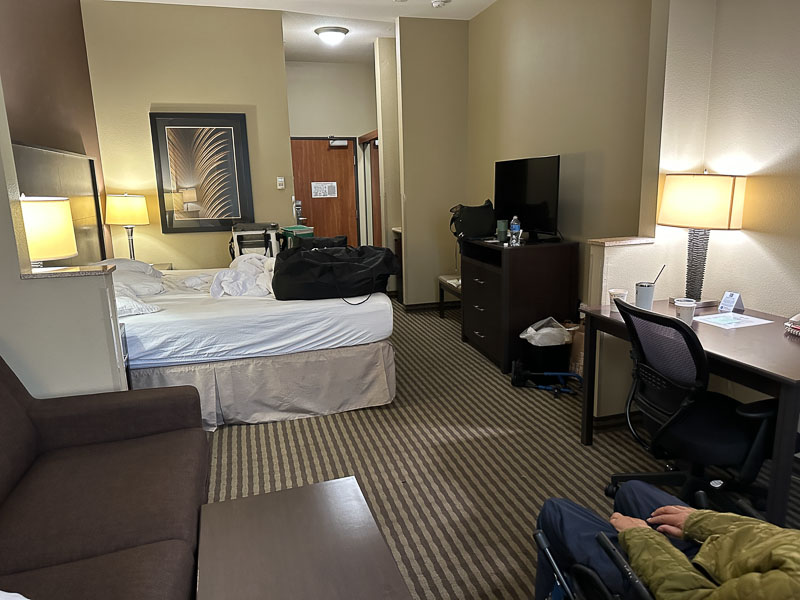
 It was with some trepidation therefore that I agreed to try the trail again after dark, particularly
since once again, we only had a couple hours of charge on the battery. We hoped to hear an owl, preferably a spotted
one, but any owl at all would be new for the county. We did hear an owl but it was Barred
not Spotted, then we heard three more tooting in the distance - Northern Saw-whets. The ventilator
battery was once again critically low by the time we returned to the car and we ourselves were almost
critically tired by the time we returned to the Best Western Motel in Washougal.
It was with some trepidation therefore that I agreed to try the trail again after dark, particularly
since once again, we only had a couple hours of charge on the battery. We hoped to hear an owl, preferably a spotted
one, but any owl at all would be new for the county. We did hear an owl but it was Barred
not Spotted, then we heard three more tooting in the distance - Northern Saw-whets. The ventilator
battery was once again critically low by the time we returned to the car and we ourselves were almost
critically tired by the time we returned to the Best Western Motel in Washougal.
Darchelle wanted to look for old growth on the hills north of Stevenson so we drove up there in the morning, pausing on the way to join a posse of motorcyclists admiring the view up the Columbia Gorge from the Cape Horn overlook. Although the morning was cool the sun was making short work of the overnight Stratus above the river.


 Up on the Stevenson
Ridge l+ the Big-leaf Maples glowed yellow under a sky nearly as blue as our iPhone photos imply.
We did not find any old growth though the thick understory of Vine Maple and other shrubs along the
road kept us on the alert for a Ruffed Grouse. Unfortunately the road edges were free-range chicken
free.
Up on the Stevenson
Ridge l+ the Big-leaf Maples glowed yellow under a sky nearly as blue as our iPhone photos imply.
We did not find any old growth though the thick understory of Vine Maple and other shrubs along the
road kept us on the alert for a Ruffed Grouse. Unfortunately the road edges were free-range chicken
free.
When we came across Bob and Pam and their pickup truck in the middle of the road, we realized why. We weren't the first vehicle to pass by that way that morning. They were scanning the road edges for mushrooms, particularly for Queen Boletes Boletus aereus, a species with which I was not familiar. Known in Europe as the Bronze Bolete, they are similar in size and shape to the King Bolete Boletus edulis but the cap is dark brown or blackish instead of pale brown and to my eye at least, the upper part of the stalk appeared to lack the the fine white reticulation characteristic of the King. They also taste different, as we discovered when we fried up the two that Bob and Pam gave us. Their flavor is slightly acidic, reminiscent of a chanterelle but heartier and a delicious complement to chicken, or grouse.
Bob and their two dogs walked over to the nearby roadcut while Pam, having learned that I have ALS, told us about a Resonant frequency machine + friends of hers were using to treat neurological and other conditions. It sounded similar to the machine Dad purchased to treat his colon cancer. Unfortunately that machine didn't work but it wasn't cheap and did not come with a money-back guarantee so I ended up paying off his credit card bill. Maybe I should have kept the machine.


 Within a few minutes Bob returned with an armload of mushrooms.
Twenty feet down the road, Pam collected several more. In addition to eating them fresh, she told us,
they dry them for use in herbal medicine. We sliced ours thick, sautéed them in butter and ate them
with free-range chicken and gratitude to Bob and Pam.
Within a few minutes Bob returned with an armload of mushrooms.
Twenty feet down the road, Pam collected several more. In addition to eating them fresh, she told us,
they dry them for use in herbal medicine. We sliced ours thick, sautéed them in butter and ate them
with free-range chicken and gratitude to Bob and Pam.
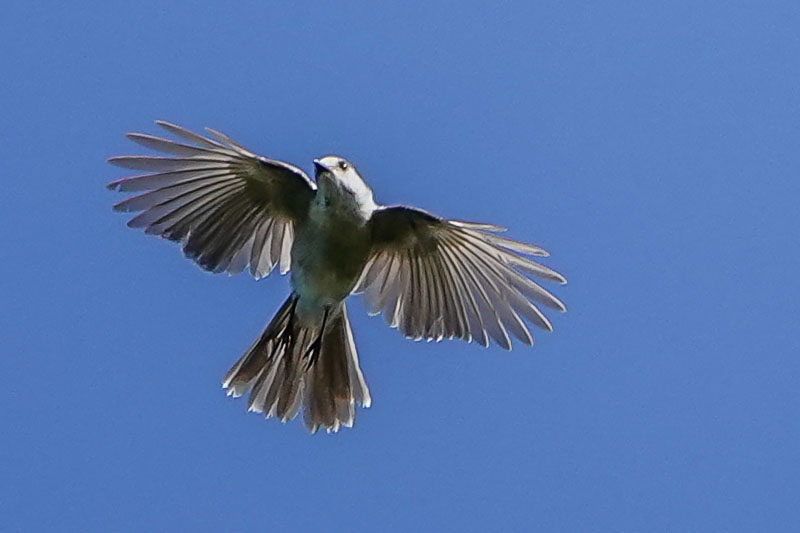
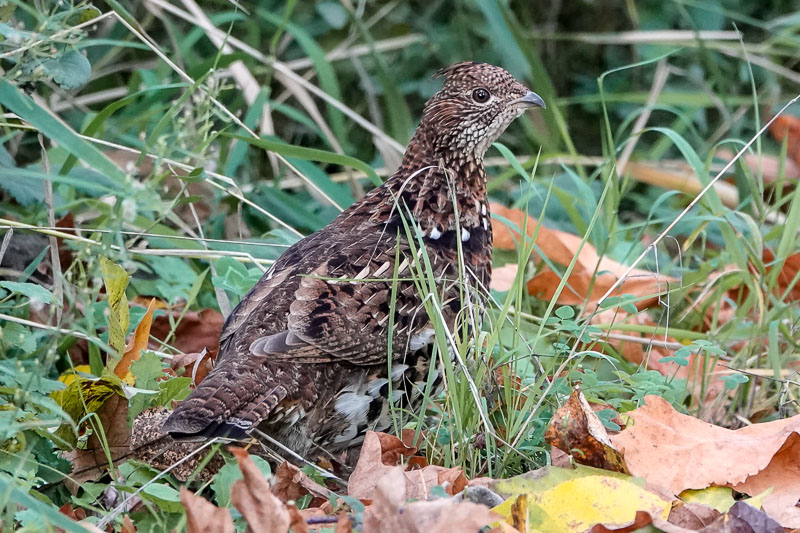
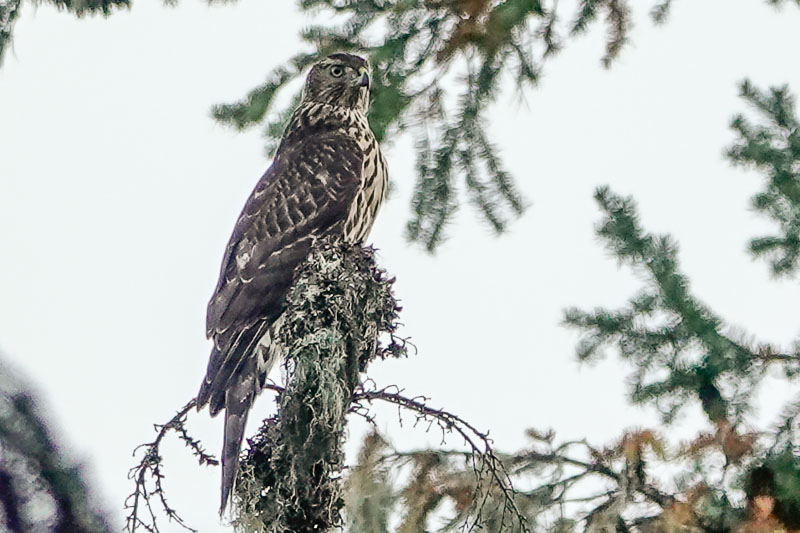 Up on Stevenson Ridge we encountered a small flock of Canada Jays, new for Darchelle for the county.
They had been my very first Skamania County bird back in August 2006 when the boys and I climbed Mount St Helens on
the day that Dad died. The Ruffed Grouse along Red Bluff Road on our way down was a county
bird for both of us. Back in town we stopped for some afternoon coffee from Bigfoot Coffee Roasters
and a burrito from the nearby food truck before heading up to FR 4309 where Bob had seen an owl,
though he wasn't sure what kind. We didn't see any owls so we drove to
FR 4306 l+,
where we flushed an American Goshawk but also saw no owls. We persevered (perseverated?) until the
stars came out, following FR 42 all the way up to Cougar Rock before turning around and heading home.
Listening to Lessons in Chemistry kept us awake on the trip back to Seattle.
Up on Stevenson Ridge we encountered a small flock of Canada Jays, new for Darchelle for the county.
They had been my very first Skamania County bird back in August 2006 when the boys and I climbed Mount St Helens on
the day that Dad died. The Ruffed Grouse along Red Bluff Road on our way down was a county
bird for both of us. Back in town we stopped for some afternoon coffee from Bigfoot Coffee Roasters
and a burrito from the nearby food truck before heading up to FR 4309 where Bob had seen an owl,
though he wasn't sure what kind. We didn't see any owls so we drove to
FR 4306 l+,
where we flushed an American Goshawk but also saw no owls. We persevered (perseverated?) until the
stars came out, following FR 42 all the way up to Cougar Rock before turning around and heading home.
Listening to Lessons in Chemistry kept us awake on the trip back to Seattle.

Old growth forest near the Whistle Punk Trail, Stabler

Ruby-crowned Kinglet, Whistle Punk Trail, Stabler

Ash grove along the Whistle Punk Trail, Stabler
A friend had recommended the Whistle Punk Trail l+ as a spot we might want to visit and he was right. The trail is an easy wheelchair-accessible 1.5 mile loop through diverse second growth forest which skirts an extensive stand of old growth at its upper end. We wheeled the loop along with a short out-and-back on a gravel road into the old-growth and a longer stop at the observation deck overlooking a willow marsh. We did not meet anyone on the trail other than a local couple walking their dogs near the end of the loop. My ventilator was sounding the critically low battery alarm so we did not visit long but before they were even out of sight behind us we ran into a fallen ash tree blocking the trail.
Suddenly my low battery became a critical problem. Although were less than five minutes from the car we could not get over or around the log. Returning back around the loop would take us nearly a half-hour and it would be at best a very uncomfortable half hour for me without air. Alternatively Darchelle could have run ahead to the car and brought the spare battery back to me but as it turned out, the spare was also dead. Aware of the fallen log, the couple behind us had paused to see if we needed help and quickly realized that we did. The man, whose name we never did catch, came back and offered to help us over the log. Darchelle pivoted me from the chair onto the log and he swung my legs over it while Darchelle lifted the chair across to the other side, then they both pivoted me back into the chair. We reached the car and plugged the ventilator in before the battery went dead but the thought of the ordeal which we had narrowly avoided unsettled me for the rest of the day.

Whistle Punk trailhead at night, Stabler

Best Western, Washougal

View east up the Columbia Gorge, Skamania County
Darchelle wanted to look for old growth on the hills north of Stevenson so we drove up there in the morning, pausing on the way to join a posse of motorcyclists admiring the view up the Columbia Gorge from the Cape Horn overlook. Although the morning was cool the sun was making short work of the overnight Stratus above the river.

Douglas Fir forest, Stevenson Ridge

Pam and Bob with Queen Bolete, Stevenson Ridge

Bronze (Queen) Bolete Boletus aereus, Stevenson Ridge
When we came across Bob and Pam and their pickup truck in the middle of the road, we realized why. We weren't the first vehicle to pass by that way that morning. They were scanning the road edges for mushrooms, particularly for Queen Boletes Boletus aereus, a species with which I was not familiar. Known in Europe as the Bronze Bolete, they are similar in size and shape to the King Bolete Boletus edulis but the cap is dark brown or blackish instead of pale brown and to my eye at least, the upper part of the stalk appeared to lack the the fine white reticulation characteristic of the King. They also taste different, as we discovered when we fried up the two that Bob and Pam gave us. Their flavor is slightly acidic, reminiscent of a chanterelle but heartier and a delicious complement to chicken, or grouse.
Bob and their two dogs walked over to the nearby roadcut while Pam, having learned that I have ALS, told us about a Resonant frequency machine + friends of hers were using to treat neurological and other conditions. It sounded similar to the machine Dad purchased to treat his colon cancer. Unfortunately that machine didn't work but it wasn't cheap and did not come with a money-back guarantee so I ended up paying off his credit card bill. Maybe I should have kept the machine.

Queen Bolete

Free-range Chicken

Queen Bolete and Free-range Chicken

Canada Jay, Stevenson Ridge

Ruffed Grouse, Red Bluff Road, Stevenson

Northern Goshawk, Stabler (FR 4306)
10/22/2023 Birthday Lunch (link to here)
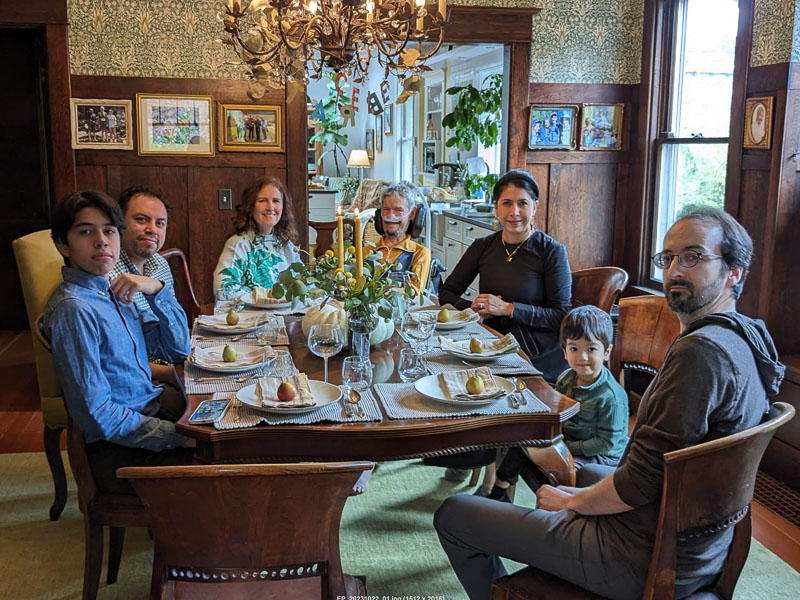

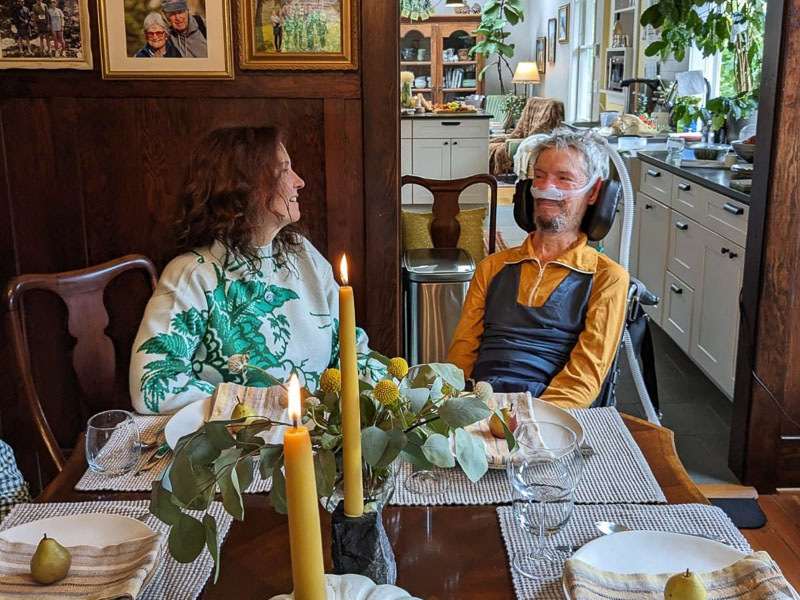 After declining offers from friends to put on a birthday lunch for her, Darchelle on Sunday hosted a
birthday lunch for herself, inviting J, E and A
and Monica, Marc and Marco,
and serving a green salad with Blood-orange dressing, a creamy potato-pear-leek soup, roasted carrots and
pasta with a Chanterelle cream sauce.
After declining offers from friends to put on a birthday lunch for her, Darchelle on Sunday hosted a
birthday lunch for herself, inviting J, E and A
and Monica, Marc and Marco,
and serving a green salad with Blood-orange dressing, a creamy potato-pear-leek soup, roasted carrots and
pasta with a Chanterelle cream sauce.

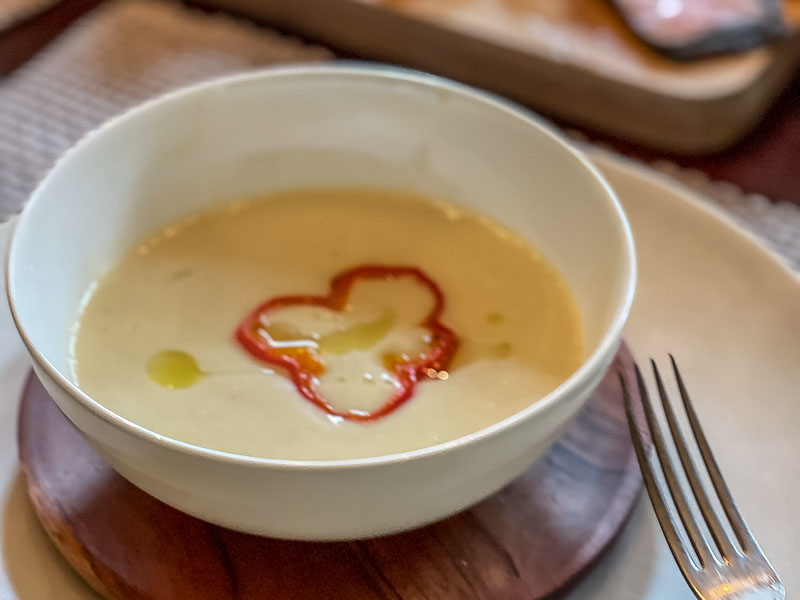
 The table setting was elegant, the food exceptionally good, the company very pleasant and A,
adorable. We don't sit around and visit much with others, whether at home or away, so we particularly
enjoyed our lunch together despite my lingering concern about COVID.
The table setting was elegant, the food exceptionally good, the company very pleasant and A,
adorable. We don't sit around and visit much with others, whether at home or away, so we particularly
enjoyed our lunch together despite my lingering concern about COVID.

At the table (photo by E)

E, Darchelle and Monica

Darchelle and me

Salad with Blood-orange dressing

Potato-pear-leek Soup

Roasted carrots and Pasta with Chanterelle cream sauce
10/25/2023 Scissor-tailed Flycatcher (link to here)

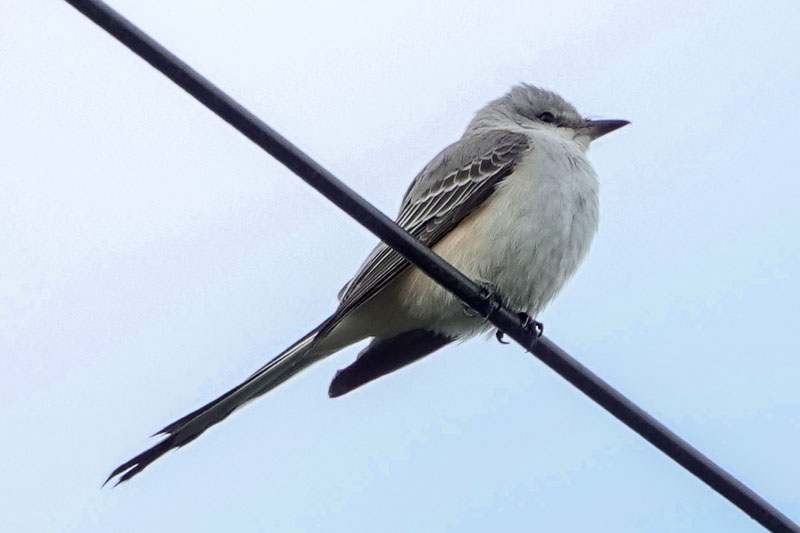
 We missed the one in Ocean Shores in May, although we did find our own in Missouri on the same day that Ed and Delia were viewing the Ocean
Shores bird, so when a Scissor-tailed Flycatcher was reported in Tokeland yesterday afternoon the
only reason we didn't leave immediately was that we could not get there before dark. We did wait
until it was reported again on the chat before leaving the house this morning but that only seemed
prudent since it would probably be there all day today if it had not departed overnight. And it was,
though by the time we reached Tokeland l+ the flycatcher had relocated to the saltmarsh where Lin
S was tracking it and was able to quickly help Darchelle and
Mason, whom we had brought with us, to see it and get a few distant photos. Without optics though,
I spent a tense half hour before I was able with their help to pick it out. I had better views
later when it returned to its original location and perched on wires right above the car.
We missed the one in Ocean Shores in May, although we did find our own in Missouri on the same day that Ed and Delia were viewing the Ocean
Shores bird, so when a Scissor-tailed Flycatcher was reported in Tokeland yesterday afternoon the
only reason we didn't leave immediately was that we could not get there before dark. We did wait
until it was reported again on the chat before leaving the house this morning but that only seemed
prudent since it would probably be there all day today if it had not departed overnight. And it was,
though by the time we reached Tokeland l+ the flycatcher had relocated to the saltmarsh where Lin
S was tracking it and was able to quickly help Darchelle and
Mason, whom we had brought with us, to see it and get a few distant photos. Without optics though,
I spent a tense half hour before I was able with their help to pick it out. I had better views
later when it returned to its original location and perched on wires right above the car.
We returned home at the end of the day while Maxine and Mike drove north to Neah Bay where they were privileged to be among the few people to see the Little Bunting + Liam and others found on Hobuck Beach and watched for a few minutes before it was eaten by a Merlin.

Scissor-tailed Flycatcher in saltmarsh, Tokeland

Scissor-tailed Flycatcher, Tokeland

Scissor-tailed Flycatcher, Tokeland
We returned home at the end of the day while Maxine and Mike drove north to Neah Bay where they were privileged to be among the few people to see the Little Bunting + Liam and others found on Hobuck Beach and watched for a few minutes before it was eaten by a Merlin.
10/31/2023 Month End (link to here)
We conclude October with 102338 miles on the car, 2463 more than a month ago, having spent 6 nights away from home and added 6 species to our year list. That gives us 354 species for the year in Washington, 15 fewer than we had a year ago but 5 more than we had at this point in 2021, our second best year in the state. We spent 12 days in the field and completed 23 checklists.
We conclude October with 102338 miles on the car, 2463 more than a month ago, having spent 6 nights away from home and added 6 species to our year list. That gives us 354 species for the year in Washington, 15 fewer than we had a year ago but 5 more than we had at this point in 2021, our second best year in the state. We spent 12 days in the field and completed 23 checklists.
11/4/2023 Sabbath (link to here)

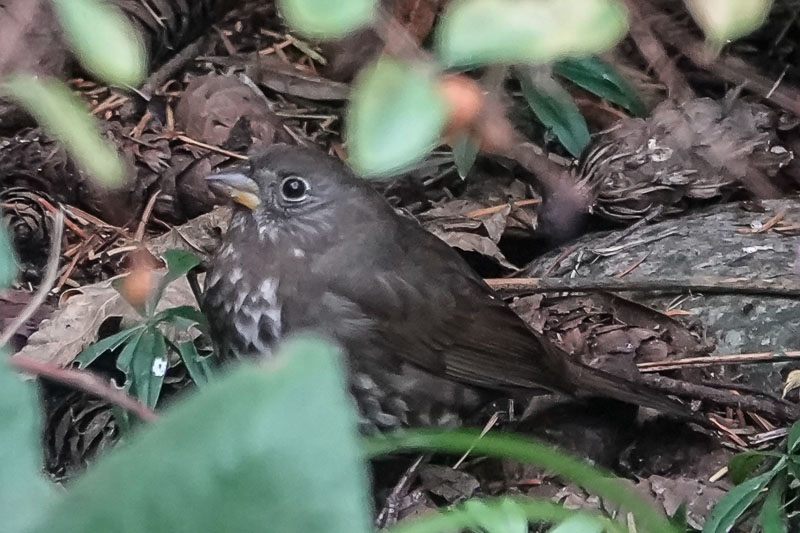 While I do not attribute to Sabbath the significant that I once did, it does provide an opportunity
to reflect on the past week, particularly when we are not out birding. Today is the ninth
consecutive day on which we have stayed home. It is our longest gap between bird outings since last
April, though we have done a few backyard checklists while watching out the French doors over coffee
and breakfast.
While I do not attribute to Sabbath the significant that I once did, it does provide an opportunity
to reflect on the past week, particularly when we are not out birding. Today is the ninth
consecutive day on which we have stayed home. It is our longest gap between bird outings since last
April, though we have done a few backyard checklists while watching out the French doors over coffee
and breakfast.
We were doing just that this morning when I spotted for the first time in our yard l+ a White-throated Sparrow, a bird which I have been expecting ever since our first winter here six years ago. I thought I recognized it but without optics wasn't sure until Darchelle got photos. The Fox Sparrow which Darchelle photographed earlier this week is also an infrequent visitor to our Ravenna yard, though common throughout Western Washington in the winter.
Apart from a little backyard birding, we spent much of the week catching up on tasks we have long been deferring in order to chase birds. I finally completed my 2022 journal pages, adding photos and some text for outings between October and December and updating the Index + and Big Year list + accordingly while Darchelle completed a couple of continuing education classes online.
On Thursday we sat in the kitchen and reviewed our to-do lists then dedicated a couple of hours to talking over what I want to happen and the steps she will need to take after I die. Those are difficult topics so perhaps it is not surprising, despite the prospect of my death in the near future, that we have not really discussed them much.
 Thursday evening we celebrated with take-out from Junebaby +. Darchelle ordered the Glazed Oxtails for me and the
Matsutake Mushrooms for herself, along with some Smoked Carrots and Buttermilk Biscuits. The oxtails
were complex and slightly spicy, really delicious. The mushrooms were good, with the slight fragrance
of shoe leather (better than it sounds) characteristic of Matsutakes but we probably would not order
them again. The carrots were authentically smoky but the biscuits were gooey in the middle. Maybe
they were supposed to be that way.
Thursday evening we celebrated with take-out from Junebaby +. Darchelle ordered the Glazed Oxtails for me and the
Matsutake Mushrooms for herself, along with some Smoked Carrots and Buttermilk Biscuits. The oxtails
were complex and slightly spicy, really delicious. The mushrooms were good, with the slight fragrance
of shoe leather (better than it sounds) characteristic of Matsutakes but we probably would not order
them again. The carrots were authentically smoky but the biscuits were gooey in the middle. Maybe
they were supposed to be that way.
Friday evening, I think it was, we cooked. At my request Darchelle had picked up a roast chicken from PCC and had simmered up a stock from the bones. Together we sautéed half an onion in butter, stirred in a tablespoon of flour then added some of the chicken stock along with a half can of diced green chiles and kept stirring until it thickened. To finish the gravy we thinned it out with a tablespoon or two of heavy cream and a clove of pressed garlic. Served over leftover chicken accompanied by a bottle of Paulaner Salvatore + which Tim left in my fridge a few months ago, it was perfect.

White-throated Sparrow, Ravenna, Seattle

Fox Sparrow, Ravenna, Seattle
We were doing just that this morning when I spotted for the first time in our yard l+ a White-throated Sparrow, a bird which I have been expecting ever since our first winter here six years ago. I thought I recognized it but without optics wasn't sure until Darchelle got photos. The Fox Sparrow which Darchelle photographed earlier this week is also an infrequent visitor to our Ravenna yard, though common throughout Western Washington in the winter.
Apart from a little backyard birding, we spent much of the week catching up on tasks we have long been deferring in order to chase birds. I finally completed my 2022 journal pages, adding photos and some text for outings between October and December and updating the Index + and Big Year list + accordingly while Darchelle completed a couple of continuing education classes online.
On Thursday we sat in the kitchen and reviewed our to-do lists then dedicated a couple of hours to talking over what I want to happen and the steps she will need to take after I die. Those are difficult topics so perhaps it is not surprising, despite the prospect of my death in the near future, that we have not really discussed them much.

Take-out from Junebaby
Friday evening, I think it was, we cooked. At my request Darchelle had picked up a roast chicken from PCC and had simmered up a stock from the bones. Together we sautéed half an onion in butter, stirred in a tablespoon of flour then added some of the chicken stock along with a half can of diced green chiles and kept stirring until it thickened. To finish the gravy we thinned it out with a tablespoon or two of heavy cream and a clove of pressed garlic. Served over leftover chicken accompanied by a bottle of Paulaner Salvatore + which Tim left in my fridge a few months ago, it was perfect.
11/12/2023 Neah Bay via Spokane (link to here)


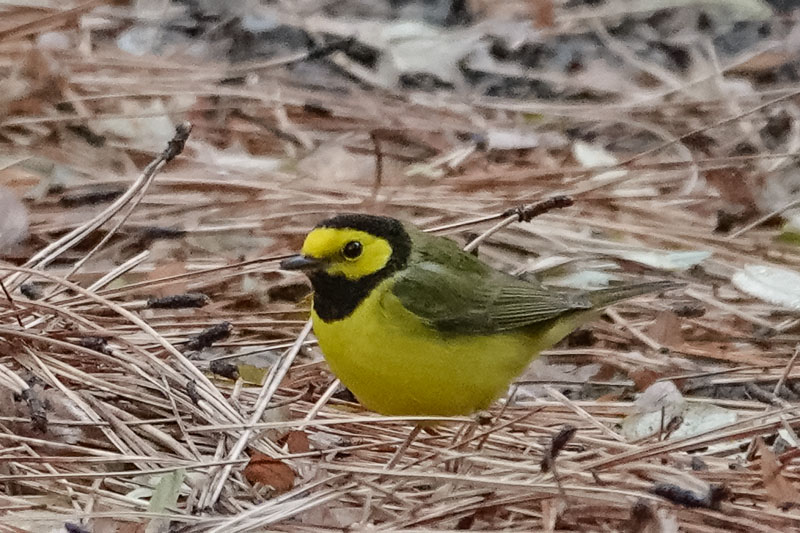 A Hooded Warbler was reported Wednesday morning in Spokane and relocated Thursday morning so we left
my ALS clinic an hour early to drive out there and look for it. Four a and half hours later we
pulled into a parking lot to get directions to the exact location and our car would not restart.
The battery was dead. We jumped it with the little charger Richard gave us last year and drove the
last two miles into the Hooded Warbler neighborhood L+ where we found Maxine and other birdwatchers but
no bird. We searched until the light began to fade and learned from a neighbor that the bird had
been in her yard at least 10 days earlier. It was probably still around.
A Hooded Warbler was reported Wednesday morning in Spokane and relocated Thursday morning so we left
my ALS clinic an hour early to drive out there and look for it. Four a and half hours later we
pulled into a parking lot to get directions to the exact location and our car would not restart.
The battery was dead. We jumped it with the little charger Richard gave us last year and drove the
last two miles into the Hooded Warbler neighborhood L+ where we found Maxine and other birdwatchers but
no bird. We searched until the light began to fade and learned from a neighbor that the bird had
been in her yard at least 10 days earlier. It was probably still around.
Maxine had recommended the Super 8 so we spent a comfortable night there after stopping by the Subaru dealer for a new battery. It wasn't cheap it solved the problem and they installed it even though we had showed up just five minutes before they were closing.
Morning was overcast but not too cold. We returned to the Hooded Warbler neighborhood L+ by 0700 but the bird was apparently still asleep. Neither we nor anyone else heard from it until 0730 but after that we all watched it foraging in pine needles and along the concrete foundations of neighborhood homes for the next two hours. As Darchelle put it in her description,
We had previously arranged with Ed and Delia and Marcus and Heather to bird Neah Bay together over the weekend but that was before the Hooded Warbler lured us out to Spokane. Ambivalent about the nine hour drive we decided to chase a Blue Jay in Pullman instead, and when we failed to find it, continued on down to Walla Walla, spent the night with Darchelle's folks and picked up the Blue Jay on South 3rd Ave L+ in the morning. The Blue Jay must have reinforced our resolve to do the right thing because we devoted the the rest of the day to that nine hour drive out to Neah Bay.
 Ed, Delia, Marcus and Heather joined us in our cozy room in Harmony Cabin #5 for supper. Our
gathering reminded us of dorm room parties back in college except we all had cell phones.
Ed, Delia, Marcus and Heather joined us in our cozy room in Harmony Cabin #5 for supper. Our
gathering reminded us of dorm room parties back in college except we all had cell phones.

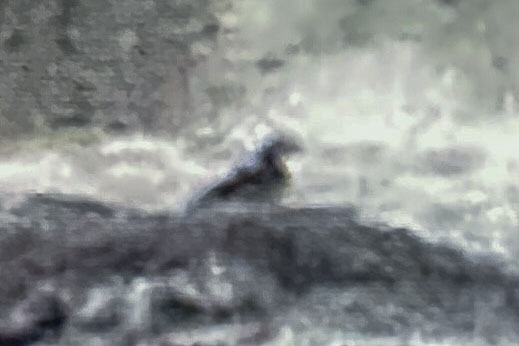
 Neah Bay L+
offers a choice of hot birding locations, among them the greenhouses on the east side of
town to which Liam and his mother were headed to scope for seabirds when Ed and Delia spotted them
and gave them a ride. They had been on foot because their car had broken down in Port Angeles the
previous morning. That had not been the last of their bad luck; although they had found a ride out
to Neah Bay Liam had subsequently missed the Brown Booby which others had seen that afternoon at the
Cape Flattery overlook. He needed that bird for his big year and without a car, the greenhouses
would be his best chance, albeit slim, to find it.
Neah Bay L+
offers a choice of hot birding locations, among them the greenhouses on the east side of
town to which Liam and his mother were headed to scope for seabirds when Ed and Delia spotted them
and gave them a ride. They had been on foot because their car had broken down in Port Angeles the
previous morning. That had not been the last of their bad luck; although they had found a ride out
to Neah Bay Liam had subsequently missed the Brown Booby which others had seen that afternoon at the
Cape Flattery overlook. He needed that bird for his big year and without a car, the greenhouses
would be his best chance, albeit slim, to find it.
Scoping is not an option for me so the booby wouldn't be either, but a Common Redpoll had been reported on the jetty making that location our first choice. The redpoll would also be new for the year for me since I'd missed the one Darchelle had seen two days earlier in Pullman. We did not have the jetty to ourselves; half the birders in Neah Bay were either already there or showed up shortly after we did. Mason, Jordan and Jennifer were with us about half way out to the turnaround. The others, including Ryan M and Scott and Sierra, were back towards the base where still more birders were trying to spot a Hooded Warbler in the blackberry brambles. While we were chasing the Hooded Warbler in Spokane this one, a juvenile, had been discovered right here in Neah Bay. We needn't have gone to Spokane after all, except for the photos.
Meanwhile Liam had spotted the Brown Booby! Shortly after word reached us that the booby was flying west out the strait, Mason picked it up in his binoculars doing just that. Noone else saw it though and once Mason lost it, the bird was gone. Until Darchelle, scoping the rocks off Koitlah Point, found it again. She was reluctant to announce her find but Mason agreed that it was the booby and got a photo which Darchelle amplified with her phone and shared with the other birders nearby. Ryan blessed the ID and Sierra let him and others see it through her scope. I saw it too; through Darchelle's binoculars I saw a tiny dark dot on a dark rock while Mason with the scope confirmed that it was the right dot. While the sight was, like most of my sightings, not very satisfying, I was grateful to be able to count it - #357 for the year and #227 all time for Clallam County.

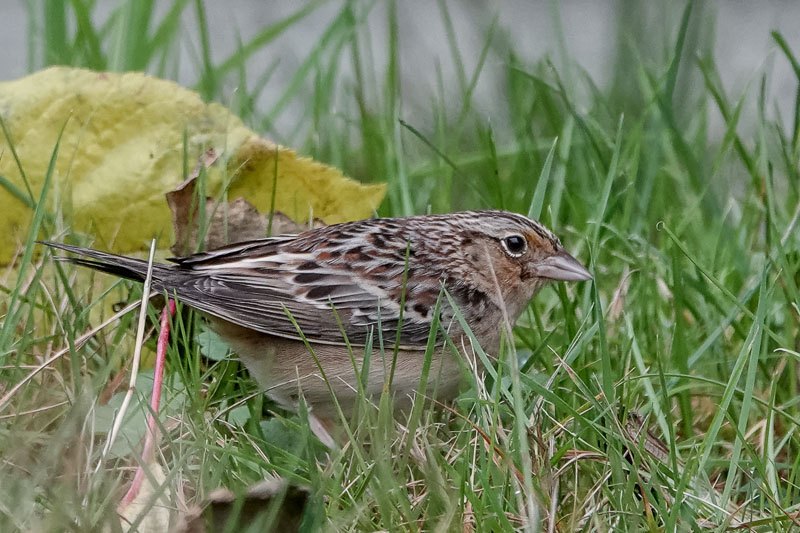
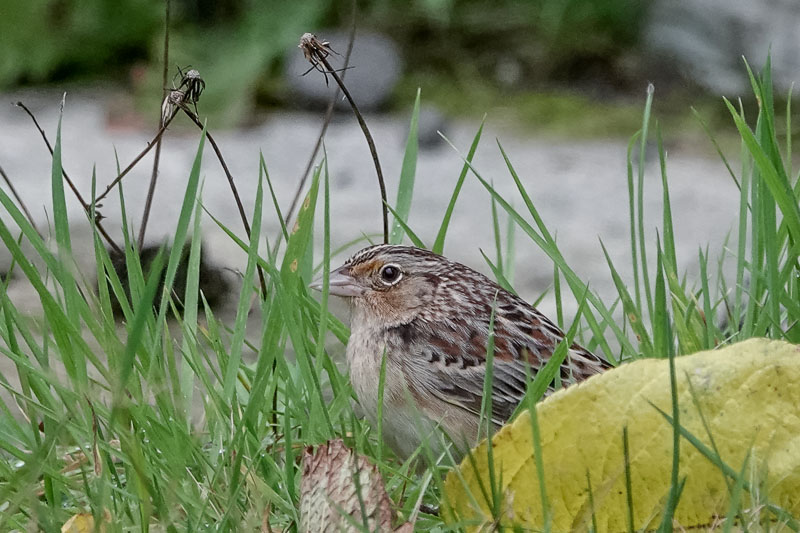 Also new for the county were the Redpoll, the Hooded Warbler, the Pine Grosbeaks behind Butler's
which Marcus pointed out to us and the Grasshopper Sparrow behind the daycare center in Ba'adah
Village which Darchelle pointed out to him and Heather.
Also new for the county were the Redpoll, the Hooded Warbler, the Pine Grosbeaks behind Butler's
which Marcus pointed out to us and the Grasshopper Sparrow behind the daycare center in Ba'adah
Village which Darchelle pointed out to him and Heather.

ALS Clinic

Searching for the Hooded Warbler, Spokane Valley

Hooded Warbler, Spokane Valley
Maxine had recommended the Super 8 so we spent a comfortable night there after stopping by the Subaru dealer for a new battery. It wasn't cheap it solved the problem and they installed it even though we had showed up just five minutes before they were closing.
Morning was overcast but not too cold. We returned to the Hooded Warbler neighborhood L+ by 0700 but the bird was apparently still asleep. Neither we nor anyone else heard from it until 0730 but after that we all watched it foraging in pine needles and along the concrete foundations of neighborhood homes for the next two hours. As Darchelle put it in her description,
We first heard distinctive sharp metallic chips about 7:30am coming from yard east of 12909. After
around 40 min began hearing/following the chips along E 26th Ave with Alex P who confirmed ID and
helped everyone track the chips. Finally saw bird foraging along 12909 house foundation for a
couple of minutes. Later Brian saw bird fly across street and drop down; I followed the chips to
same area finding the bird along foundation east of vacant house. Eventually bird settled down for
several minutes in yard north of vacant house while we peered through bordering backyard fence.
Overall a fun chase with a great group of birders and interested, supportive residents.
My view of the bird was brief at best but at least I did not miss it.We had previously arranged with Ed and Delia and Marcus and Heather to bird Neah Bay together over the weekend but that was before the Hooded Warbler lured us out to Spokane. Ambivalent about the nine hour drive we decided to chase a Blue Jay in Pullman instead, and when we failed to find it, continued on down to Walla Walla, spent the night with Darchelle's folks and picked up the Blue Jay on South 3rd Ave L+ in the morning. The Blue Jay must have reinforced our resolve to do the right thing because we devoted the the rest of the day to that nine hour drive out to Neah Bay.

Party in Harmony Cabin room 5

Koitlah Point, Neah Bay

Brown Booby (photo by Mason)

Common Redpoll, Neah Bay
Scoping is not an option for me so the booby wouldn't be either, but a Common Redpoll had been reported on the jetty making that location our first choice. The redpoll would also be new for the year for me since I'd missed the one Darchelle had seen two days earlier in Pullman. We did not have the jetty to ourselves; half the birders in Neah Bay were either already there or showed up shortly after we did. Mason, Jordan and Jennifer were with us about half way out to the turnaround. The others, including Ryan M and Scott and Sierra, were back towards the base where still more birders were trying to spot a Hooded Warbler in the blackberry brambles. While we were chasing the Hooded Warbler in Spokane this one, a juvenile, had been discovered right here in Neah Bay. We needn't have gone to Spokane after all, except for the photos.
Meanwhile Liam had spotted the Brown Booby! Shortly after word reached us that the booby was flying west out the strait, Mason picked it up in his binoculars doing just that. Noone else saw it though and once Mason lost it, the bird was gone. Until Darchelle, scoping the rocks off Koitlah Point, found it again. She was reluctant to announce her find but Mason agreed that it was the booby and got a photo which Darchelle amplified with her phone and shared with the other birders nearby. Ryan blessed the ID and Sierra let him and others see it through her scope. I saw it too; through Darchelle's binoculars I saw a tiny dark dot on a dark rock while Mason with the scope confirmed that it was the right dot. While the sight was, like most of my sightings, not very satisfying, I was grateful to be able to count it - #357 for the year and #227 all time for Clallam County.

Marcus and Ed birding Neah Bay

Grasshopper Sparrow, Neah Bay

Grasshopper Sparrow, Neah Bay
11/13/2023 Moses Lake (link to here)

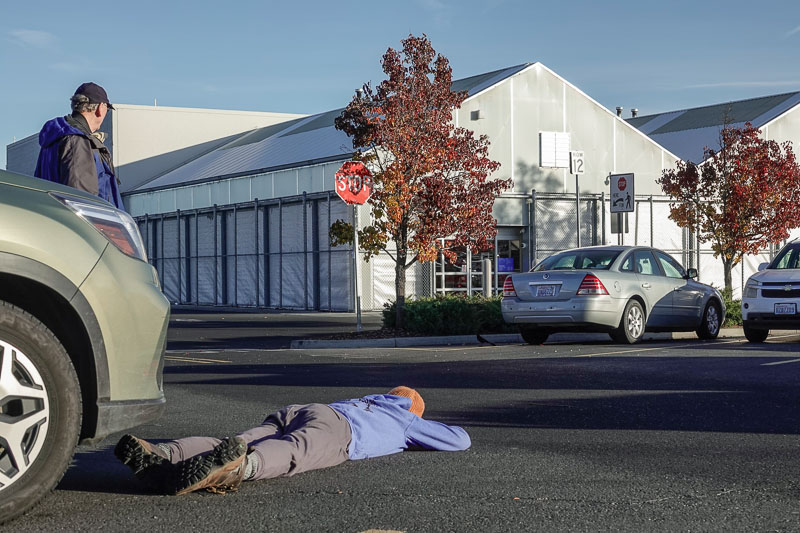
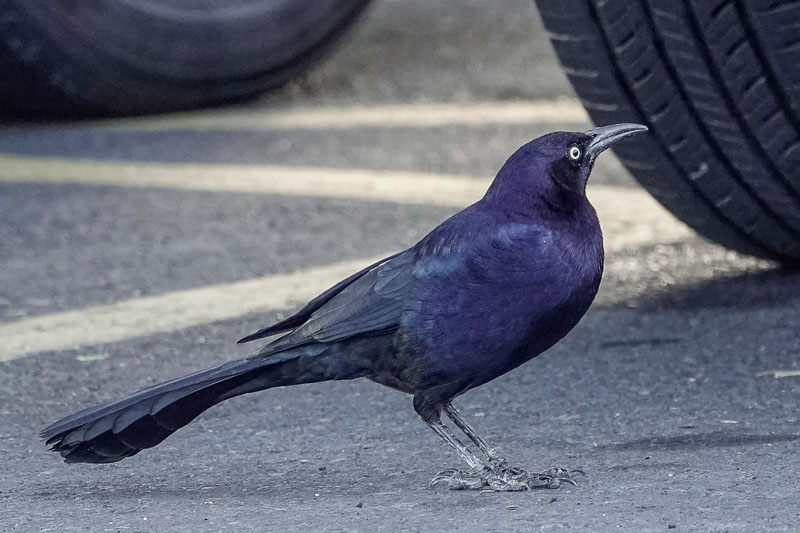 We were sipping (sucking in my case) coffee together in the kitchen around mid-morning after a
fairly late return from Neah Bay last night when Darchelle received an alert that a Great-tailed
Grackle had been discovered in a Walmart parking lot in Moses Lake, three hours east of Seattle. We
pulled into the parking
lot L+ four hours later and found Lisa H,
whom we had met four days earlier in Spokane, already there. She had seen the bird earlier that morning,
left for a while and returned to see it again. Maybe she hadn't had her camera with her on the earlier visit.
Anyhow she pointed to the far side of the lot where she had last seen it and we quickly found it there.
Liam was just a few minutes away so we told him how to find us and we all spent the next hour taking photos.
I sat in the car and watched.
We were sipping (sucking in my case) coffee together in the kitchen around mid-morning after a
fairly late return from Neah Bay last night when Darchelle received an alert that a Great-tailed
Grackle had been discovered in a Walmart parking lot in Moses Lake, three hours east of Seattle. We
pulled into the parking
lot L+ four hours later and found Lisa H,
whom we had met four days earlier in Spokane, already there. She had seen the bird earlier that morning,
left for a while and returned to see it again. Maybe she hadn't had her camera with her on the earlier visit.
Anyhow she pointed to the far side of the lot where she had last seen it and we quickly found it there.
Liam was just a few minutes away so we told him how to find us and we all spent the next hour taking photos.
I sat in the car and watched.

Great-tailed Grackle, Walmart parking lot, Moses Lake

Liam photographing the Great-tailed Grackle

Great-tailed Grackle, Walmart parking lot, Moses Lake
11/16/2023 Spokane again (link to here)
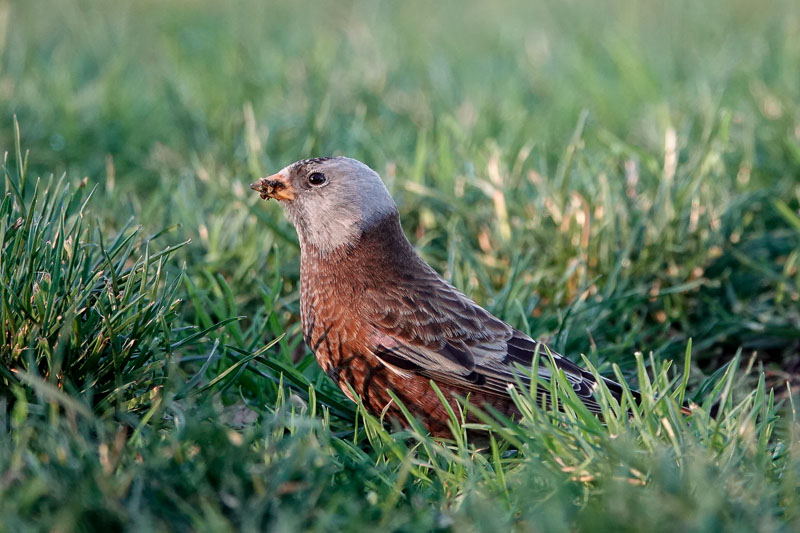

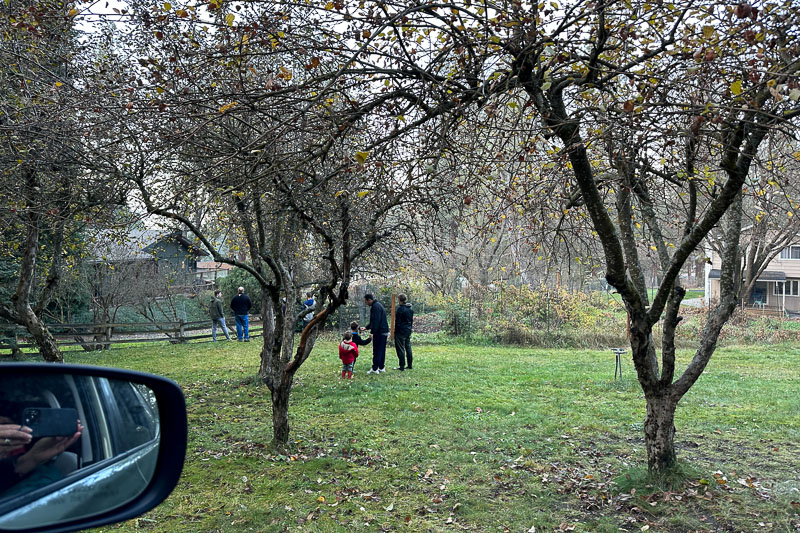 I didn't see the Rosy-Finch at Maple Leaf Park. That was yesterday afternoon I think. I was on the
computer and didn't feel like going out so Darchelle went without me. Today we drove out to
Spokane L+ and back
to see a Black-throated Blue Warbler. The homeowner was pleased to have a rare bird visiting her feeders
but uncomfortable with all the optics trained on her home so we kept our distance. Those with optics
and/or legs watched from the friendly neighbor's yard. I watched from the car. We all saw it.
I didn't see the Rosy-Finch at Maple Leaf Park. That was yesterday afternoon I think. I was on the
computer and didn't feel like going out so Darchelle went without me. Today we drove out to
Spokane L+ and back
to see a Black-throated Blue Warbler. The homeowner was pleased to have a rare bird visiting her feeders
but uncomfortable with all the optics trained on her home so we kept our distance. Those with optics
and/or legs watched from the friendly neighbor's yard. I watched from the car. We all saw it.

Gray-crowned Rosy-Finch, Maple Leaf Park, Seattle

Black-throated Blue Warbler, Spokane

Watching the neighbor's Black-throated Blue Warbler
11/19/2023 Home with friends (link to here)

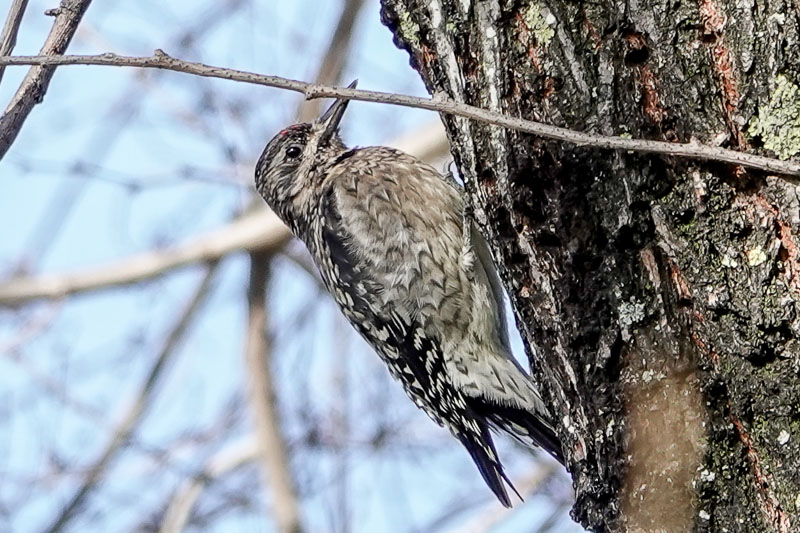
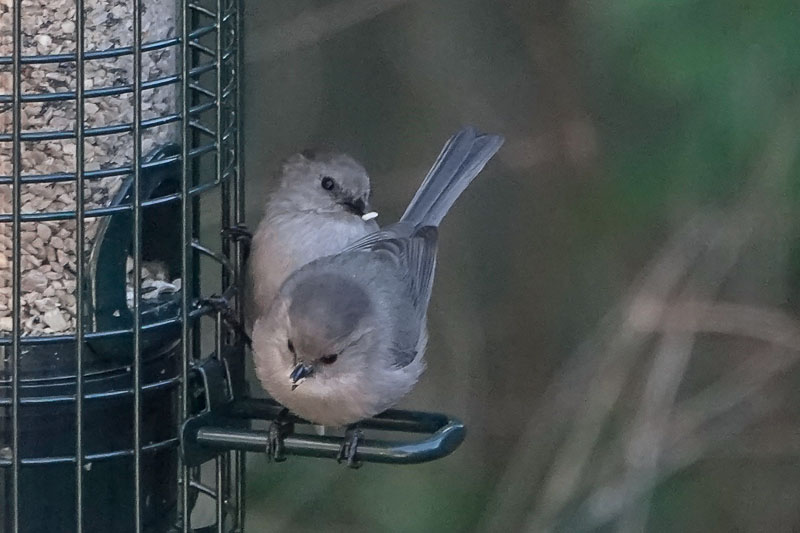 Another rare eastern vagrant showed up yesterday, this time on the west side only an hour from home. We
drove up to Mt Vernon L+
this morning and found the bird after a half hour or so with the help of half a dozen other birders.
Yellow-bellied Sapsuckers tend to look scruffy and this one was no exception but it seemed happy enough
in its Chinese Elm tree.
Another rare eastern vagrant showed up yesterday, this time on the west side only an hour from home. We
drove up to Mt Vernon L+
this morning and found the bird after a half hour or so with the help of half a dozen other birders.
Yellow-bellied Sapsuckers tend to look scruffy and this one was no exception but it seemed happy enough
in its Chinese Elm tree.


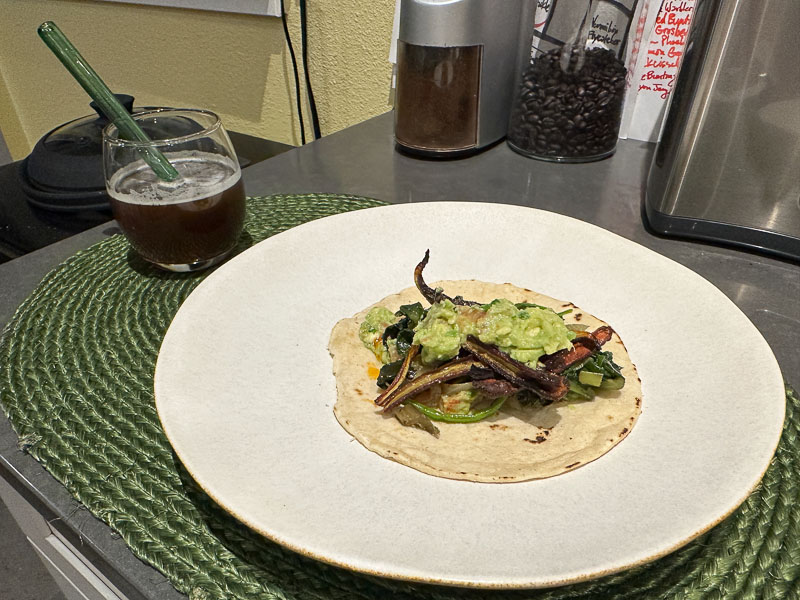 We are grateful when friends visit, particularly when they bring dinner. Tim came over a few nights
ago and fixed me salmon. Monica prepared sopes for us this evening then she, Marco and Marc joined
us for supper.
We are grateful when friends visit, particularly when they bring dinner. Tim came over a few nights
ago and fixed me salmon. Monica prepared sopes for us this evening then she, Marco and Marc joined
us for supper.

Searching for the Sapsucker, Mt Vernon

Yellow-bellied Sapsucker, Mt Vernon

Bushtits, Ravenna, Seattle

Tim serving salmon and rice

Monica serving Sopes

Vegan Sope
11/22/2023 Green Lake (link to here)
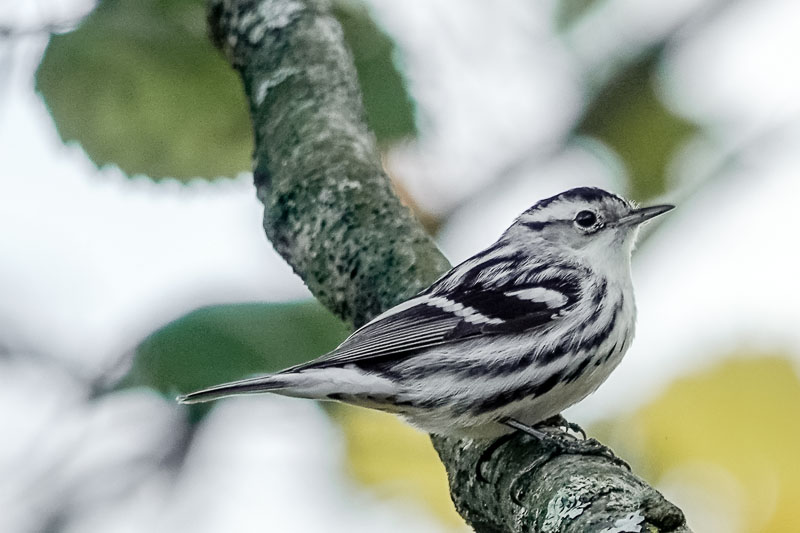

 Darchelle was working yesterday so we were not able to get over to
Green Lake L+ to chase
the Black-and-white Warbler until this morning on our way to Walla Walla. We and other birders searched
for about an hour along the southwest shore of the lake where the bird had most recently been reported
before Alex refound it back up by the Bathhouse Theatre. For once I had good views too.
Darchelle was working yesterday so we were not able to get over to
Green Lake L+ to chase
the Black-and-white Warbler until this morning on our way to Walla Walla. We and other birders searched
for about an hour along the southwest shore of the lake where the bird had most recently been reported
before Alex refound it back up by the Bathhouse Theatre. For once I had good views too.
Our second birding stop on the way out of town was less successful. We wheeled into the dog park at Marymoor Park L+ to look for a Rose-breasted Grosbeak and probably found it but could not confirm the ID. As Darchelle noted:

Black-and-white Warbler, Green Lake

Searching for the Black-and-white Warbler, Green Lake

Selfie, Green Lake
Our second birding stop on the way out of town was less successful. We wheeled into the dog park at Marymoor Park L+ to look for a Rose-breasted Grosbeak and probably found it but could not confirm the ID. As Darchelle noted:
Calls matched Sibley’s RBGR. Backlit and behind some twigs on an outer hawthorn branch here:
(47.6565623, -122.1122723). Size and “pot-belly” shape when perched consistent with photo posted
earlier. Prominent dark cap sharply contrasted with pale above eye, but otherwise could not clearly
make out face pattern due to twigs and backlighting. Pale breast with buffy-toned upper area that
contrasted with brown upperparts. Could not make out streaks on breast. One thin white wingbar
noted, second possible less distinct wingbar/white mark. Could not pick out bill, perhaps because
backlit and/or twigs. Bird called several times while attempting photos (came out blurry but show
shape and pale breast). Brian, watching the bird from some distance behind me, thought I was using
RBGR playback when it called. Bird flew north and disappeared into bushes/brambles about here:
(47.6568033, -122.1122546). Could not relocate. Later disappointed to find photos unusable so did
not report it.
11/25/2023 Walla Walla (link to here)


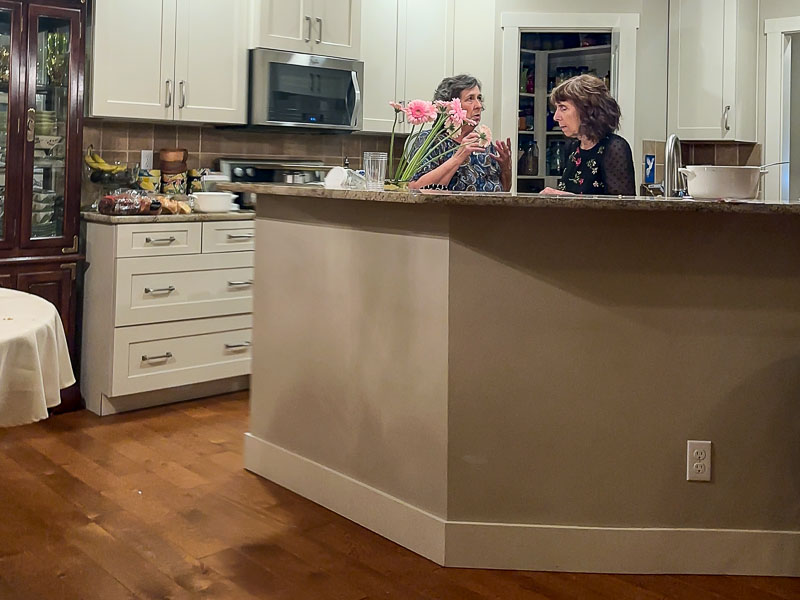 We celebrated Thanksgiving with Darchelle's parents and two of her sisters and their familes. I
found time between eating and visiting to watch the new bird feeders L+ Darchelle set up a month or two ago. The birds
have discovered them.
We celebrated Thanksgiving with Darchelle's parents and two of her sisters and their familes. I
found time between eating and visiting to watch the new bird feeders L+ Darchelle set up a month or two ago. The birds
have discovered them.

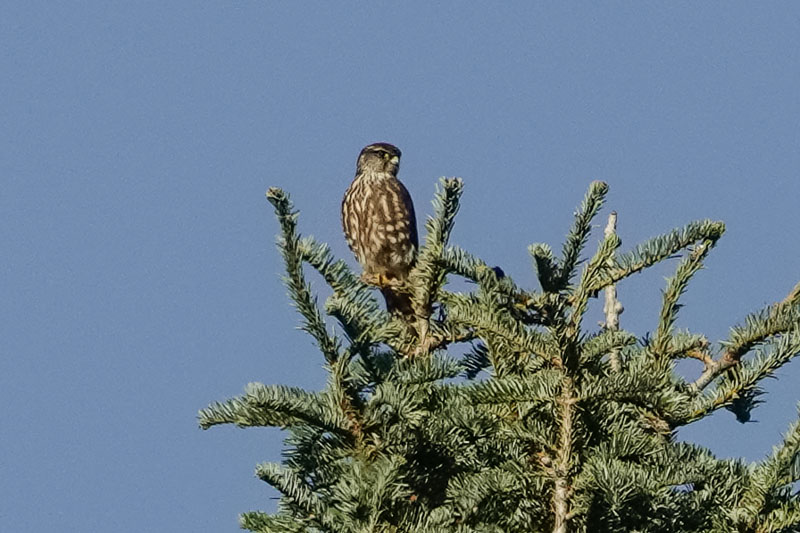
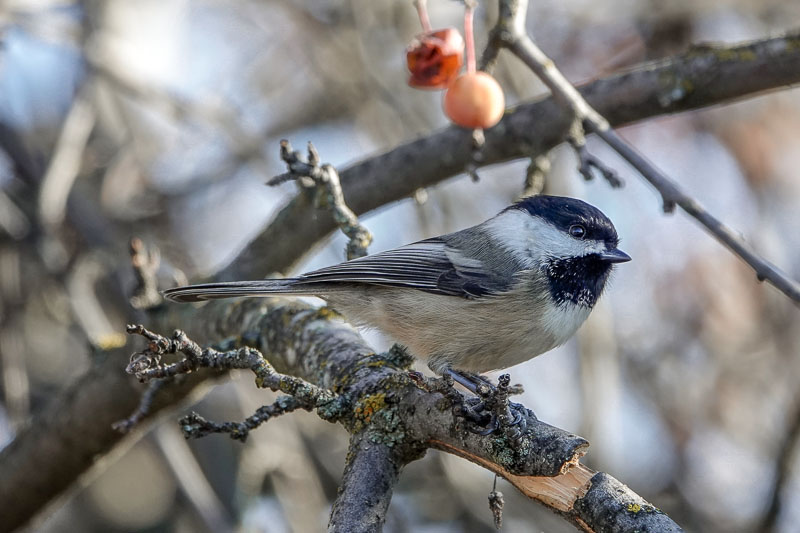 On Saturday morning Darchelle and I drove over to S 3rd Ave L+ to check up on the Blue Jay. It was still there,
apparently undisturbed by the Merlin patrolling the neighborhood.
On Saturday morning Darchelle and I drove over to S 3rd Ave L+ to check up on the Blue Jay. It was still there,
apparently undisturbed by the Merlin patrolling the neighborhood.

Winter Squash, Andy's Market, Walla Walla

Alicia with the kids, Walla Walla

Berna and Donna, Walla Walla

Blue Jay, Walla Walla

Merlin, Walla Walla

Black-capped Chickadee, Walla Walla
11/29/2023 Winter Wren (link to here)
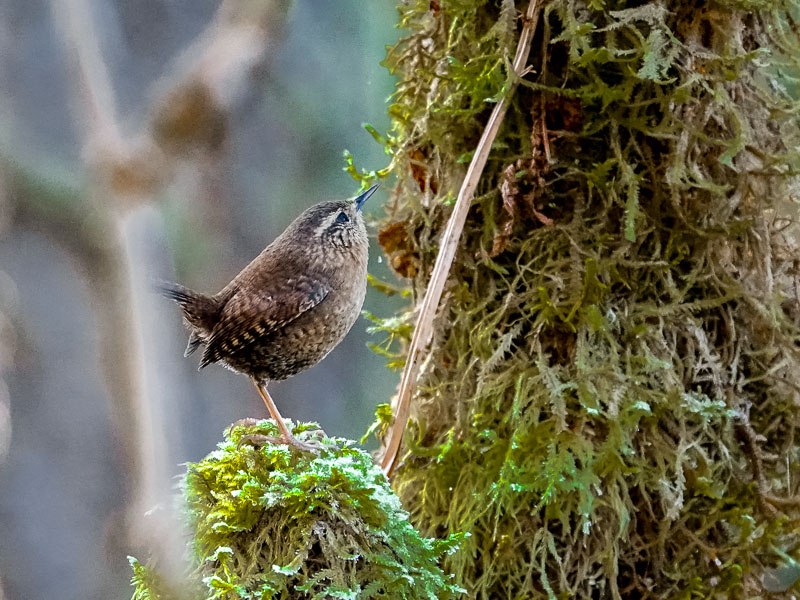
 Last Saturday Ryan M found a Winter Wren + at Barnaby Slough in the Skagit River floodplain east of
Rockport. Winter Wrens are not easily distinguished from Pacific Wrens which is why this one, if
confirmed, would be only the second state record. We considered chasing it on Monday but we did not
get home from Walla Walla until late Sunday evening, and moreover it was not clear that the location
was accessible by wheelchair. A forecast of rain tomorrow forced our hand so we recruited Ed and
Delia to drive up there with us today to look for it.
Last Saturday Ryan M found a Winter Wren + at Barnaby Slough in the Skagit River floodplain east of
Rockport. Winter Wrens are not easily distinguished from Pacific Wrens which is why this one, if
confirmed, would be only the second state record. We considered chasing it on Monday but we did not
get home from Walla Walla until late Sunday evening, and moreover it was not clear that the location
was accessible by wheelchair. A forecast of rain tomorrow forced our hand so we recruited Ed and
Delia to drive up there with us today to look for it.
Darchelle wisely insisted on an early start, though that meant that she had to douse our wheelchair ramp with hot water to melt the frost before wheeling me down it. Once we left the city we found frost carpeting open fields and road edges and accumulating like snowfall in shady spots. When we reached the trailhead the temperature was only 24F and freezing fog overnight had coated every twig and branch with gleaming needles of ice. That's not something we see every day.


 A gravel trail smoother than many forest roads runs about a quarter-mile from a pullout along the
Martin Ranch Road in to Barnaby Slough. Passage to the slough by wheelchair would have been
straightforward had not someone with several dumptruck loads of spare boulders opted to obstruct it.
The first and fourth barricades were the most effective, requiring that we go off-trail through the
woods. We might have managed that without Ed and Delia's assistance and then again we might not
have.
A gravel trail smoother than many forest roads runs about a quarter-mile from a pullout along the
Martin Ranch Road in to Barnaby Slough. Passage to the slough by wheelchair would have been
straightforward had not someone with several dumptruck loads of spare boulders opted to obstruct it.
The first and fourth barricades were the most effective, requiring that we go off-trail through the
woods. We might have managed that without Ed and Delia's assistance and then again we might not
have.
Ryan had found the bird in a grassy bog with a few maples and standing snags, actually quite suitable habitat for a Winter Wren, in the midst of second-growth Douglas Fir forest about 50 yards before the slough. Darchelle was parking me along the trail overlooking the bog in the vicinity of the spot Ryan had reported when Delia, around a corner ahead of us, announced that she was hearing calls which she thought might be the wren. We dashed over to her and agreed that the calls sounded right. As we stood there, the calls came closer and within a minute or two, the bird popped up out the brambles just a few yards off the road.
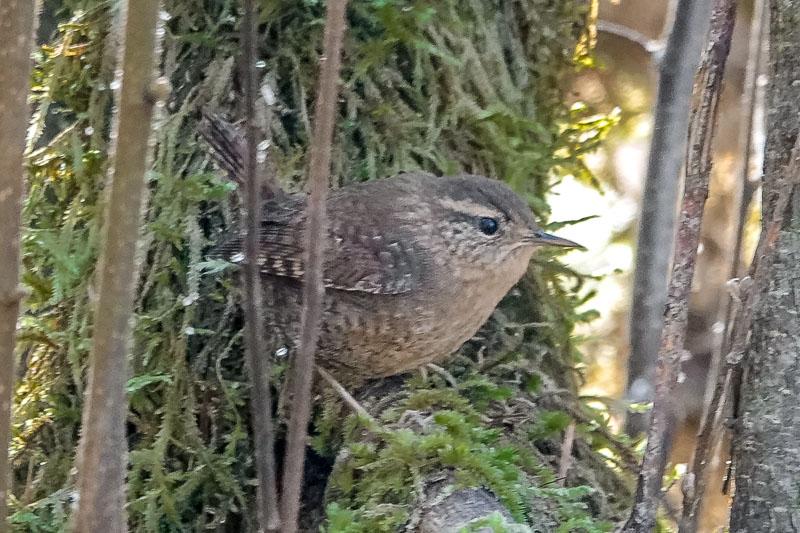

 Even at close range it was not obvious that this bird was not just another Pacific Wren. As we noted
in our eBird checklist l+,
Even at close range it was not obvious that this bird was not just another Pacific Wren. As we noted
in our eBird checklist l+,
Voice, in particular the contact call, is the most reliable way to differentiate the two species. Darchelle recorded both the Winter Wren and a Pacific Wren in the same vicinity. The difference can be difficult to hear in the recordings but is easier to to see in the sonograms (which can be viewed in the checklist l+). The sonograms reveal that the loudest portion of the Winter Wren song is between 4 and 6 kHz while the loudest portion of the Pacific Wren song is between 6 and 8 kHz. The notes of the former often display more harmonics, which appear in the sonogram as discrete dark bands between 6 and 10 kHz, than the more diffuse notes of the Pacific Wren.

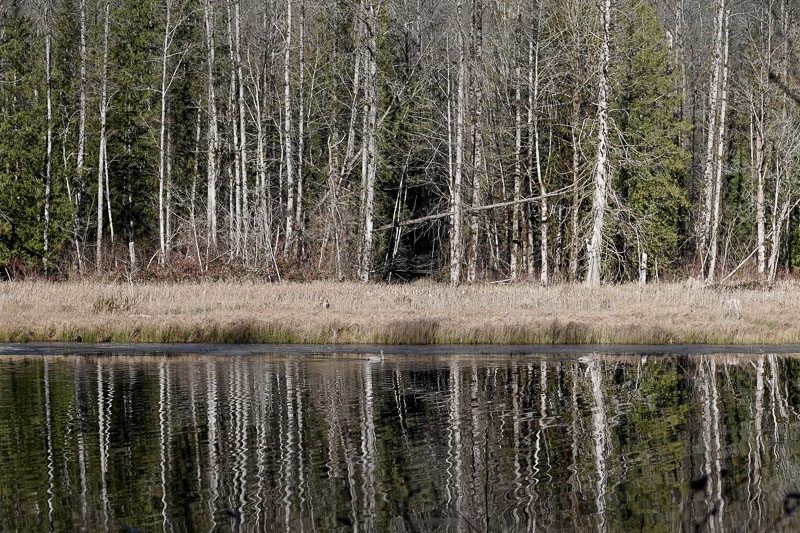
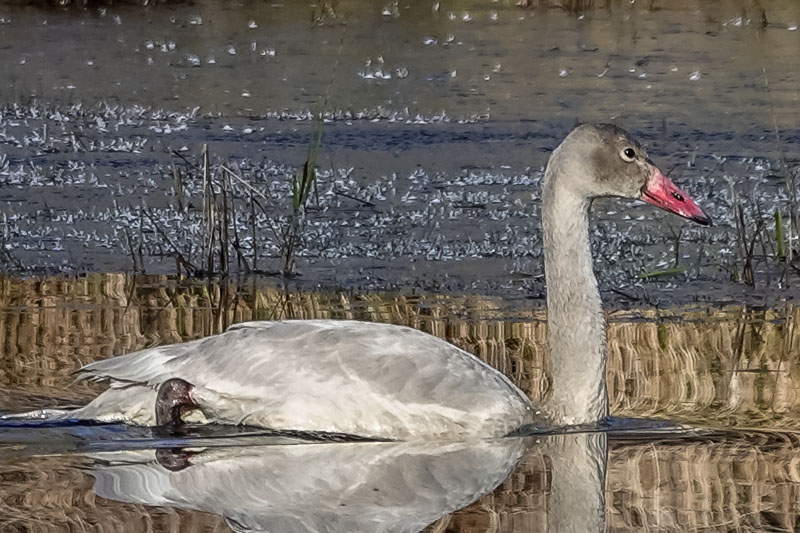 I was surprised to see swans in the slough, though only the Tundras are actually uncommon there.
We all walked (wheeled) west along the slough until we encountered a fallen tree, then Darchelle
kept going to get swan photos while Ed and Delia took me back to the wren spot. While we were
waiting for the wren to reappear, which it did not, I spotted a Northern Pygmy-Owl, another year
bird for Ed and Delia and a consolation bird for Dave S,
who ended up missing the wren.
I was surprised to see swans in the slough, though only the Tundras are actually uncommon there.
We all walked (wheeled) west along the slough until we encountered a fallen tree, then Darchelle
kept going to get swan photos while Ed and Delia took me back to the wren spot. While we were
waiting for the wren to reappear, which it did not, I spotted a Northern Pygmy-Owl, another year
bird for Ed and Delia and a consolation bird for Dave S,
who ended up missing the wren.
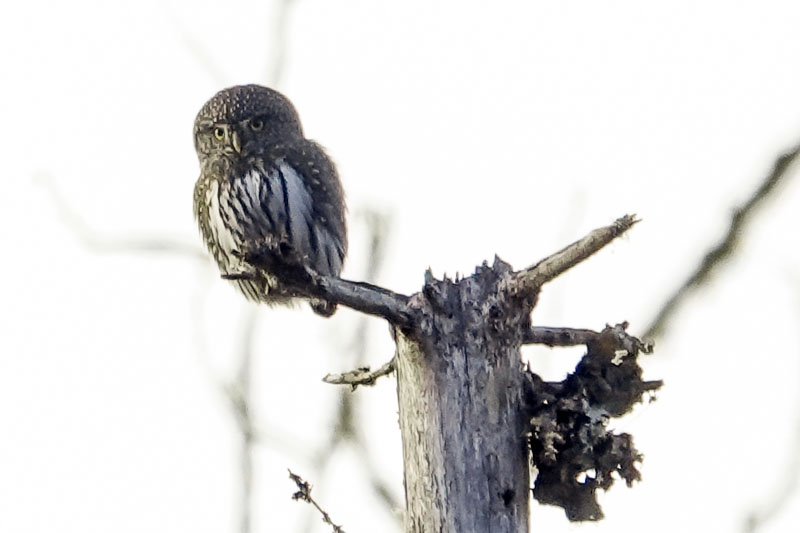

 The air had warmed up enough to melt all the frost by the time we returned to the car around 12:30 PM.
We, or at least I, took another hour of sitting in the car with the engine running and the heat on
in order to warm up. Darchelle had a phone appointment, which she took while seated outside on a stump.
While we waited for her to finish, Delia did a little more birding and found the Dipper swimming in
the slough. Ed and I took a nap.
The air had warmed up enough to melt all the frost by the time we returned to the car around 12:30 PM.
We, or at least I, took another hour of sitting in the car with the engine running and the heat on
in order to warm up. Darchelle had a phone appointment, which she took while seated outside on a stump.
While we waited for her to finish, Delia did a little more birding and found the Dipper swimming in
the slough. Ed and I took a nap.

Winter Wren, Barnaby Slough

Pacific Wren, Barnaby Slough
Darchelle wisely insisted on an early start, though that meant that she had to douse our wheelchair ramp with hot water to melt the frost before wheeling me down it. Once we left the city we found frost carpeting open fields and road edges and accumulating like snowfall in shady spots. When we reached the trailhead the temperature was only 24F and freezing fog overnight had coated every twig and branch with gleaming needles of ice. That's not something we see every day.

View back towards the trailhead

Soft Rime Ice

Winter Wren bog near Barnaby Slough
Ryan had found the bird in a grassy bog with a few maples and standing snags, actually quite suitable habitat for a Winter Wren, in the midst of second-growth Douglas Fir forest about 50 yards before the slough. Darchelle was parking me along the trail overlooking the bog in the vicinity of the spot Ryan had reported when Delia, around a corner ahead of us, announced that she was hearing calls which she thought might be the wren. We dashed over to her and agreed that the calls sounded right. As we stood there, the calls came closer and within a minute or two, the bird popped up out the brambles just a few yards off the road.

Winter Wren, Barnaby Slough

Douglas Squirrel, Barnaby Slough

Winter Wren, Barnaby Slough
Plumage very similar to Pacific Wren. This individual is most easily distinguished by an obvious
whitish supercilium and a dark line extending behind eye; both lines are of equal width. Throat
pale grayish, contrasting with pale brown breast and belly. Calls distinguishable from Pacific Wren
by lower pitch and less "squeaky" tone. In doubled call, second note is often slightly higher than
the first while in Pacific Wren second note is often slightly lower than the first.
Actually its similarity to a Pacific Wren was not really a problem for us. We did not have to prove
that our bird was a Winter Wren; we only had to demonstrate that it was the exact same bird that
Ryan had found. Within a few minutes Darchelle was able to obtain photographs and recordings which
did just that.Voice, in particular the contact call, is the most reliable way to differentiate the two species. Darchelle recorded both the Winter Wren and a Pacific Wren in the same vicinity. The difference can be difficult to hear in the recordings but is easier to to see in the sonograms (which can be viewed in the checklist l+). The sonograms reveal that the loudest portion of the Winter Wren song is between 4 and 6 kHz while the loudest portion of the Pacific Wren song is between 6 and 8 kHz. The notes of the former often display more harmonics, which appear in the sonogram as discrete dark bands between 6 and 10 kHz, than the more diffuse notes of the Pacific Wren.

Trumpeter Swans, Barnaby Slough

Barnaby Slough

Juvenile Tundra Swan, Barnaby Slough

Northern Pygmy-Owl, Barnaby Slough

Ed and Delia helping me through the woods

American Dipper, Barnaby Slough
11/30/2023 Vagrants (link to here)
A recent discussion on the King County bird chat inspired me to compare the fall vagrants this year with the fall vagrants last year and the fall vagrants in 2021. The difference is dramatic. Since the middle of August this year, 33 vagrant species have turned up in the state, roughly twice as many as were found during the same time period in each of the past two years. (FWIW, I have excluded Ruff and Blue-gray Gnatcatcher, both of which occurred in both years, from these totals, but on the other hand I have included sightings from various sources including some not yet confirmed in eBird. Also my 2021 vagrant list may be missing one or two species.)
In the bird chat discussion, Ryan M reported a similar finding:
A recent discussion on the King County bird chat inspired me to compare the fall vagrants this year with the fall vagrants last year and the fall vagrants in 2021. The difference is dramatic. Since the middle of August this year, 33 vagrant species have turned up in the state, roughly twice as many as were found during the same time period in each of the past two years. (FWIW, I have excluded Ruff and Blue-gray Gnatcatcher, both of which occurred in both years, from these totals, but on the other hand I have included sightings from various sources including some not yet confirmed in eBird. Also my 2021 vagrant list may be missing one or two species.)
In the bird chat discussion, Ryan M reported a similar finding:
I did a quick tally of land bird vagrants in Washington from Aug to Dec since 2020, as well as
2008 which stands in my mind as probably the best fall for land bird vagrants that I've experienced.
So far in 2023 we're up around 40 individual vagrants and that jumps up to around 50 if you include
Blue-gray Gnatcatcher! Compare that to 20 in 2022, 17 in 2021 and 14 in 2020. 2008 had about 30
vagrants found, and considering the hugely increased number of birders since then and that being
before Neah Bay was birded at all, 2008 was probably similar to if not better than this year.
Liam picked a good year to go for the record!
We wrap up November with 105488 miles on the car, 3150 more than
a month ago, having spent 7 nights away from home and added 9 species to our year
list. That gives us 363 species for the year in Washington, 10 fewer than we had a year ago but 11
more than we had at this point in 2021, our second best year in the state. We spent 9 days in the
field and completed 22 checklists.
12/05/2023 2024 Calendar (link to here)
2024 Calendar Although I was not excited about the project this year, Darchelle was determined to produce another iteration of our Washington Nature Calendar + so she helped me pick out photos and insert them into the calendar, a task which requires more dexterity with the mouse than I can currently manage. This is our eighth calendar and I was worried that we would not have enough calendar-worthy images but between the two of us we found a few to work with. Darchelle took 60% of them this year, mostly but not all in Washington, and I edited them. Each calendar page covers one month and has two photos, one featured on top and the other in the background behind the dates.
For the past seven years we have given calendars to friends and family for Christmas but this year, unhappy with the quality of the two samples we ordered for ourselves, I did not order the others. Maybe I'll try again next year.
Below are the photos of the calendar that wasn't, ordered by calendar page, along with a brief discussion of each one.
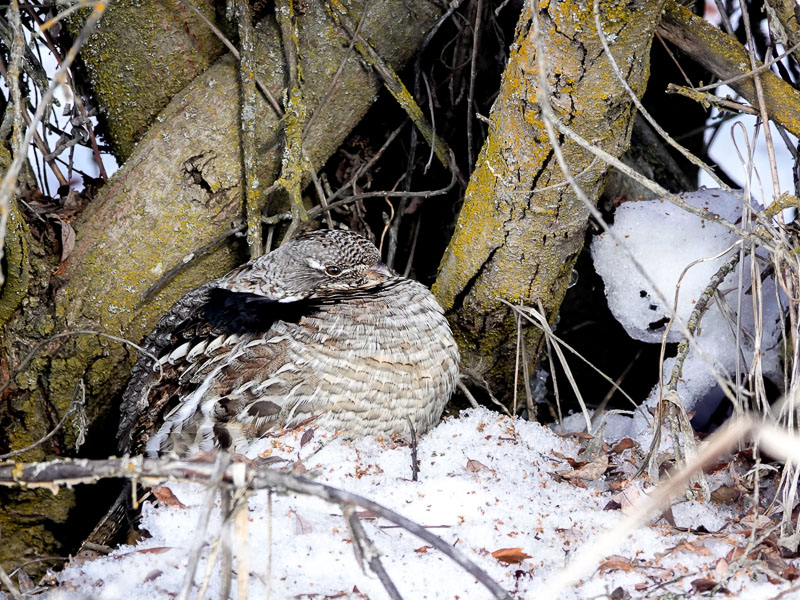
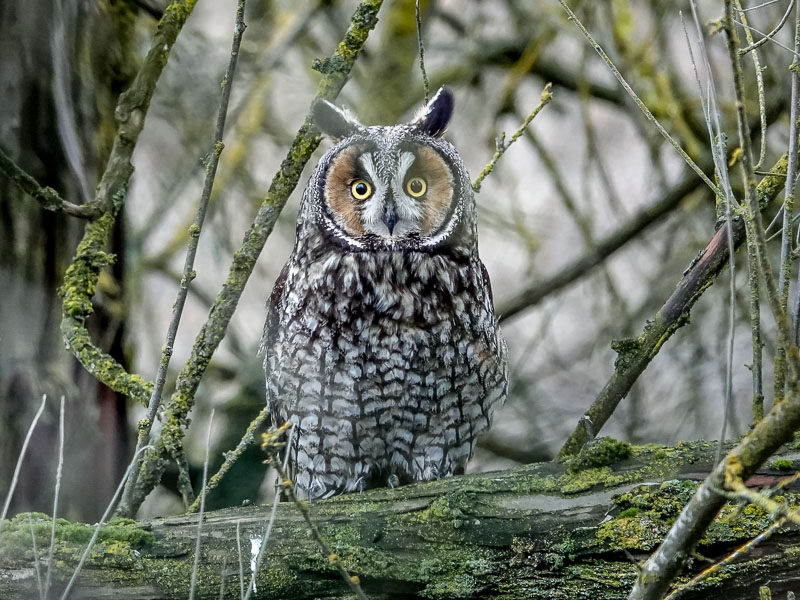

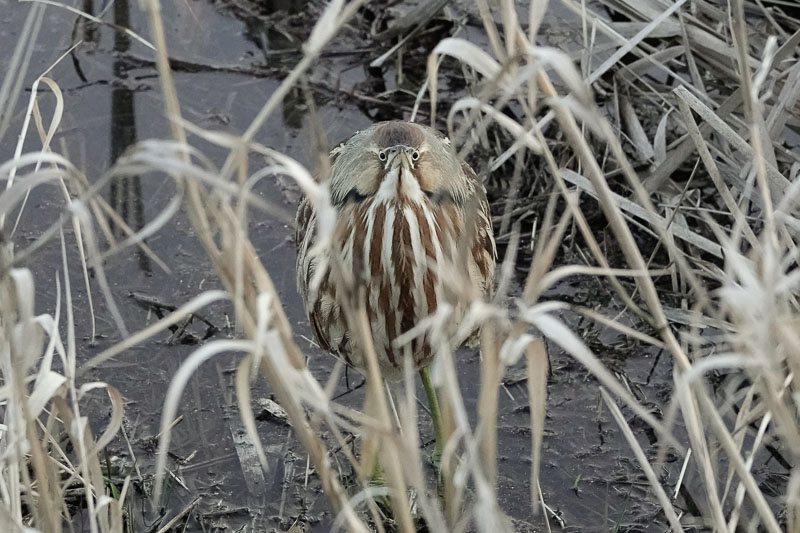
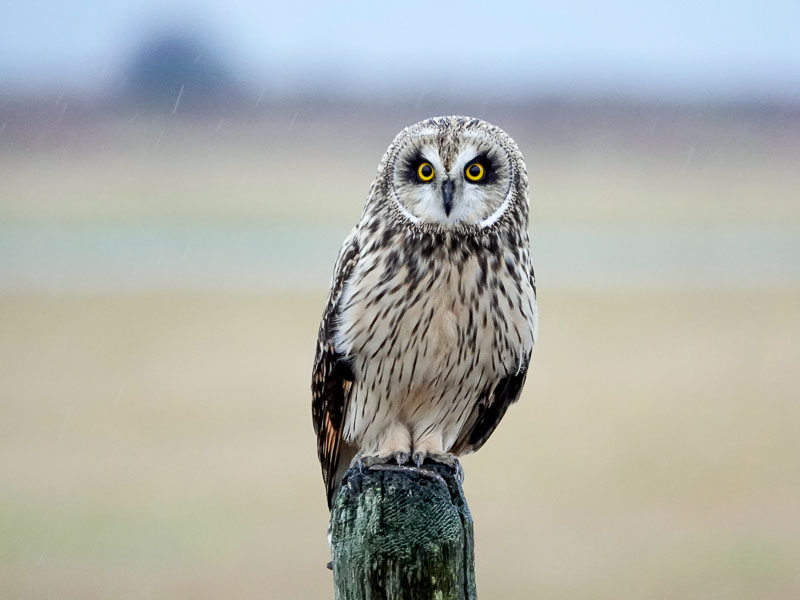
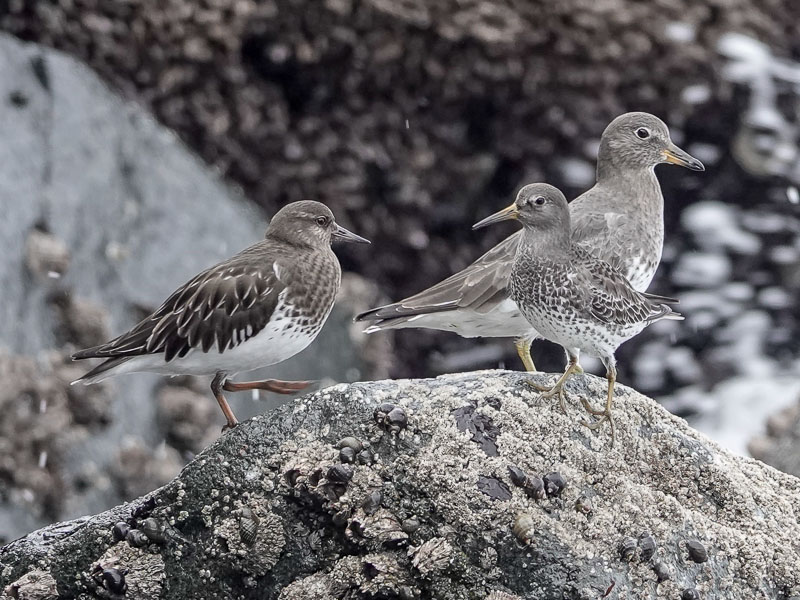 January
January
We made our annual winter pilgrimage to Okanogan County during late January this year and fared well with owls and chickens, one of which graces our January calendar page. Darchelle photographed the American Bittern in the background image late on a February afternoon at Ridgefield NWR. Both it and the Ruffed Grouse trust their cryptic coloration to conceal them from predators and therefore sometimes permit even the most dangerous predator in the region to approach within a few feet before they take evasive action.
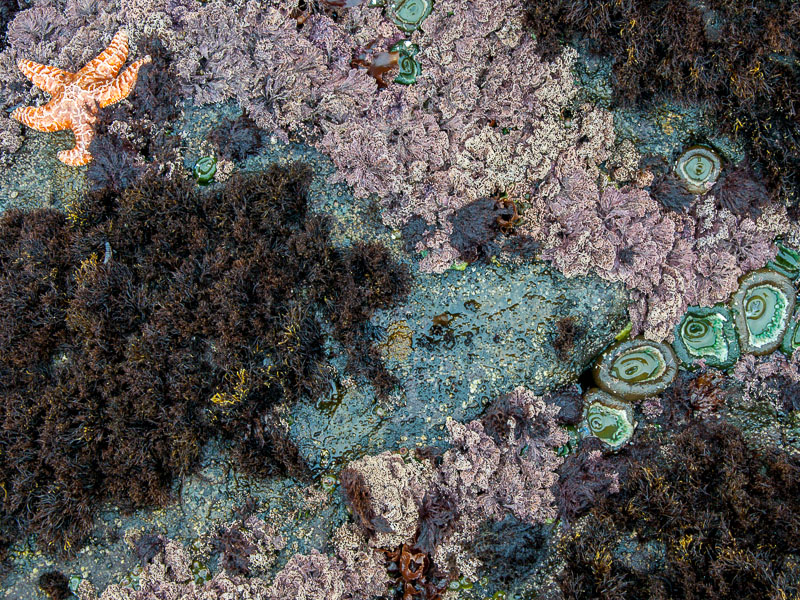

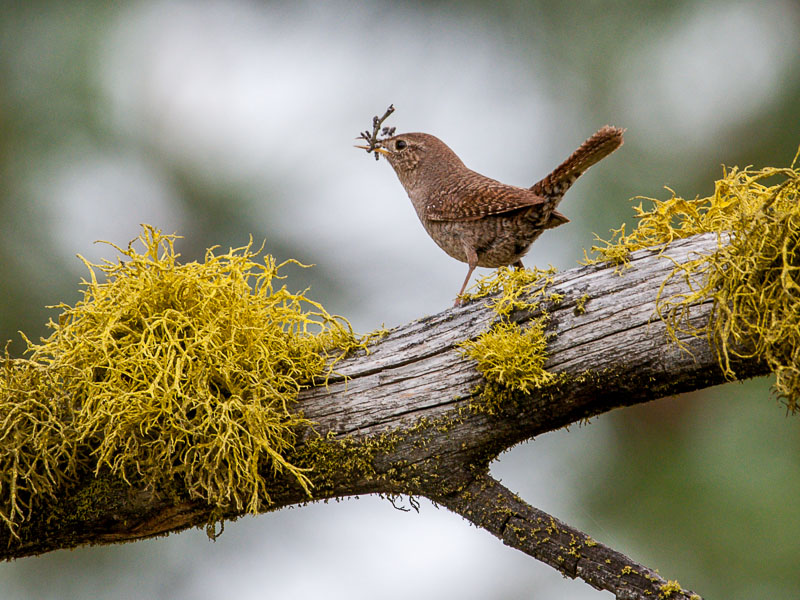
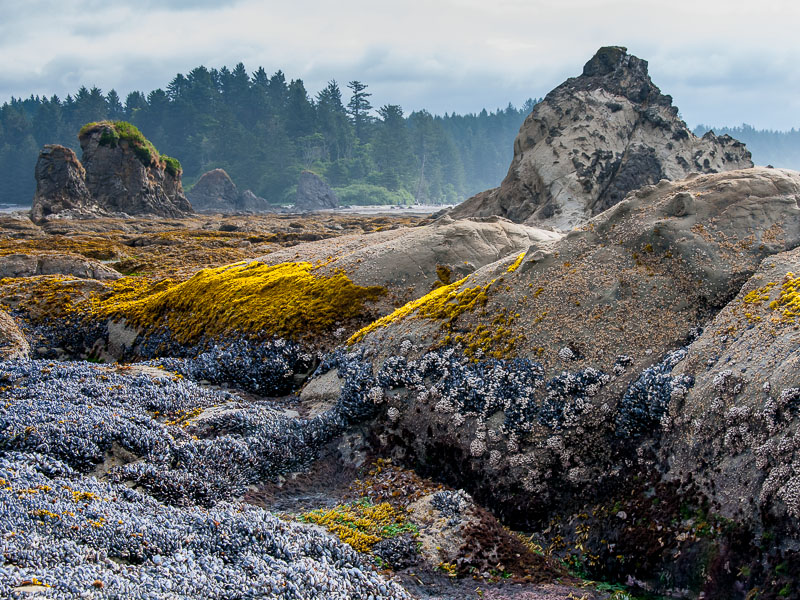
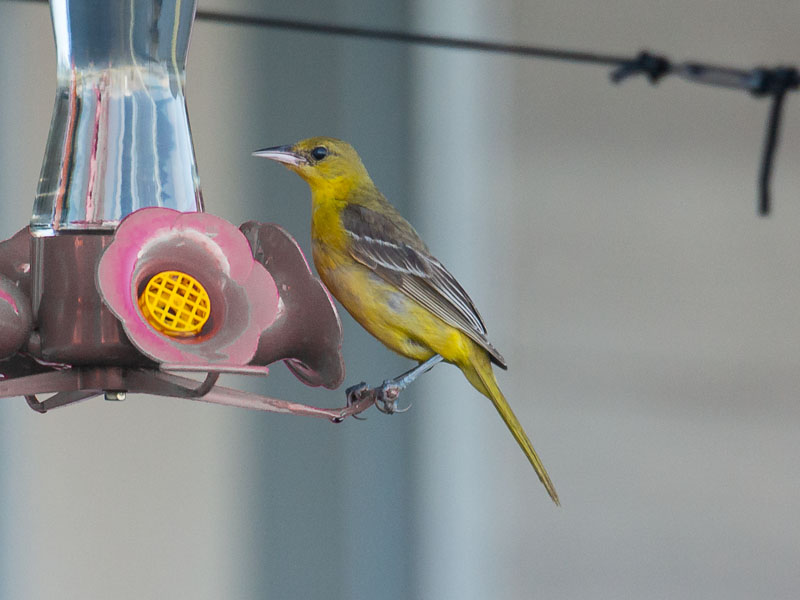
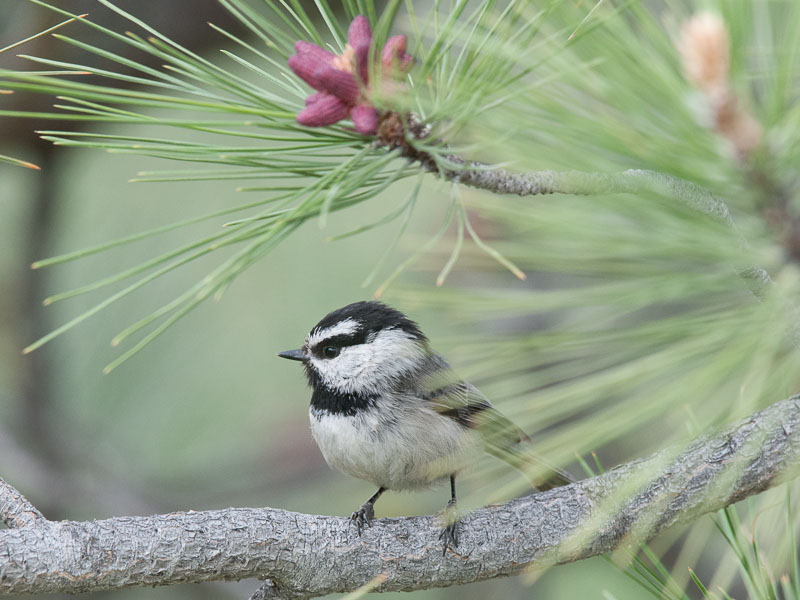 April
April
The calendar images for April were from a backpacking trip David and I did on the Olympic Coast back in 2011. Although we were there in August. I figured I could use the photos for April because I don't think intertidal life changes much over the course of the year.

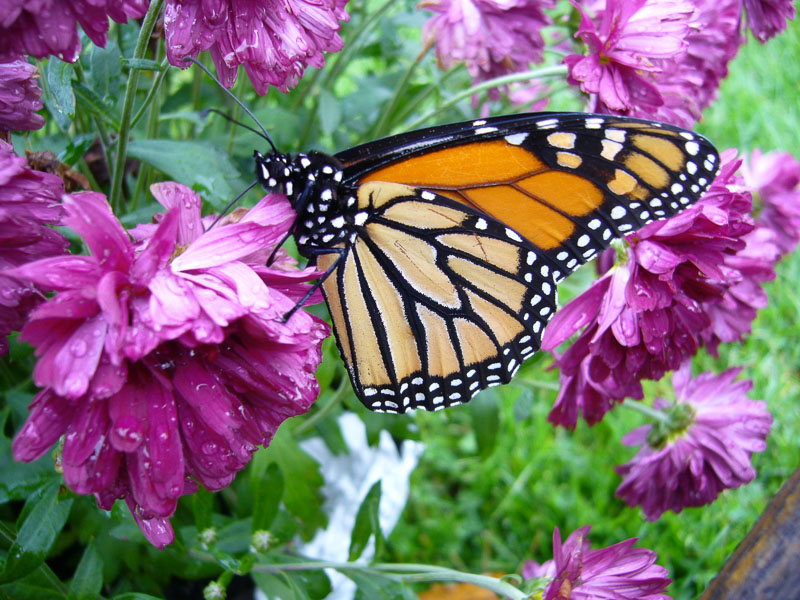

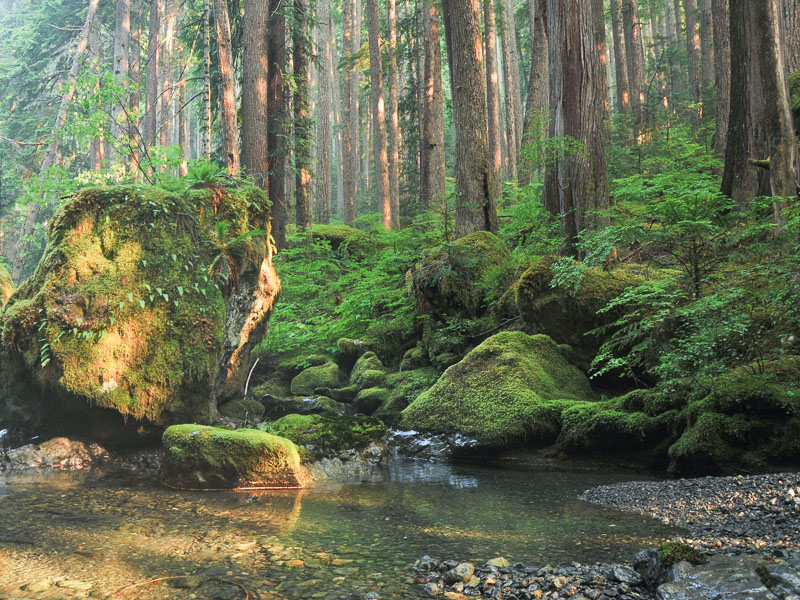
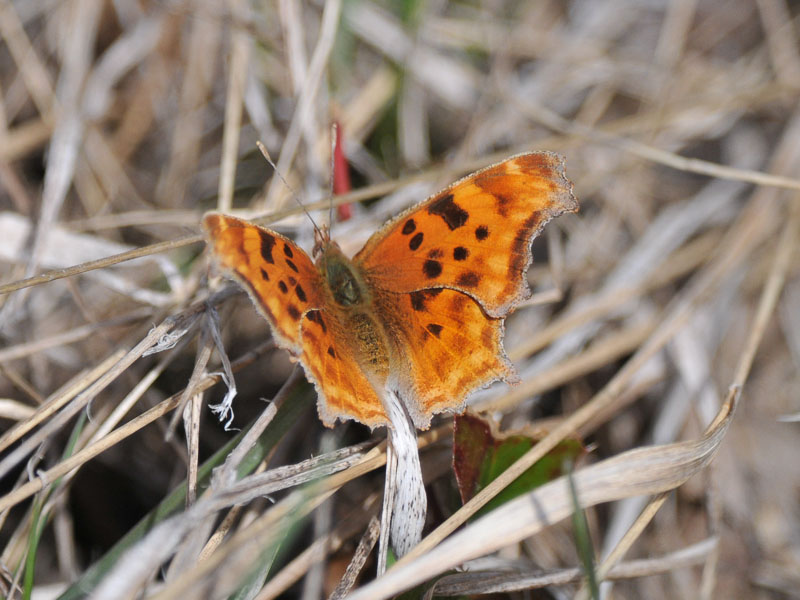 July
July
The White-tailed fawn was following its mother across the Biscuit Ridge Road outside of Dixie when we came around the corner. The doe bounded into the bushes while her fawn collapsed on the pavement. We found its innocent confidence in its cryptic coloration adorable but when Darchelle hopped out for a photo the fawn prudently abandoned plan A and wobbled off into the bushes after its mother. The deer in the background photo is also a Whitetail, photographed on a sunny May morning while we were looking for Yellow-throated Warblers.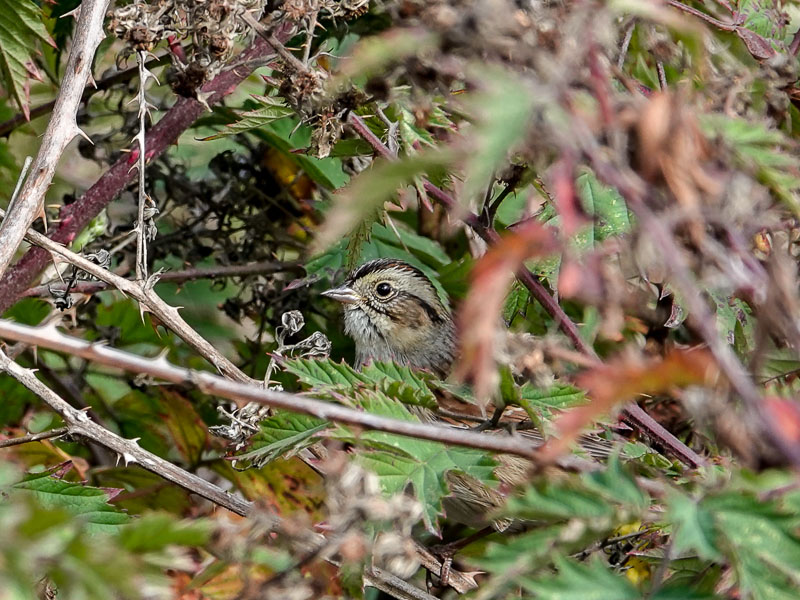
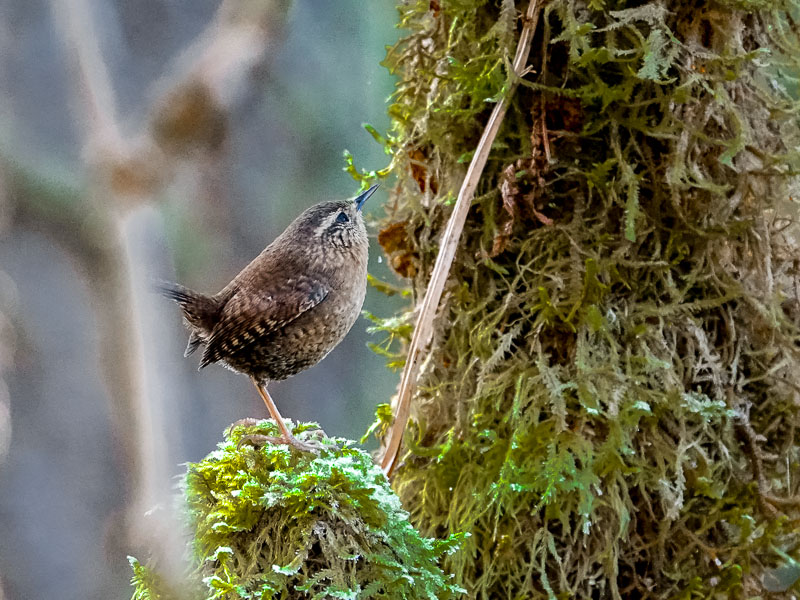
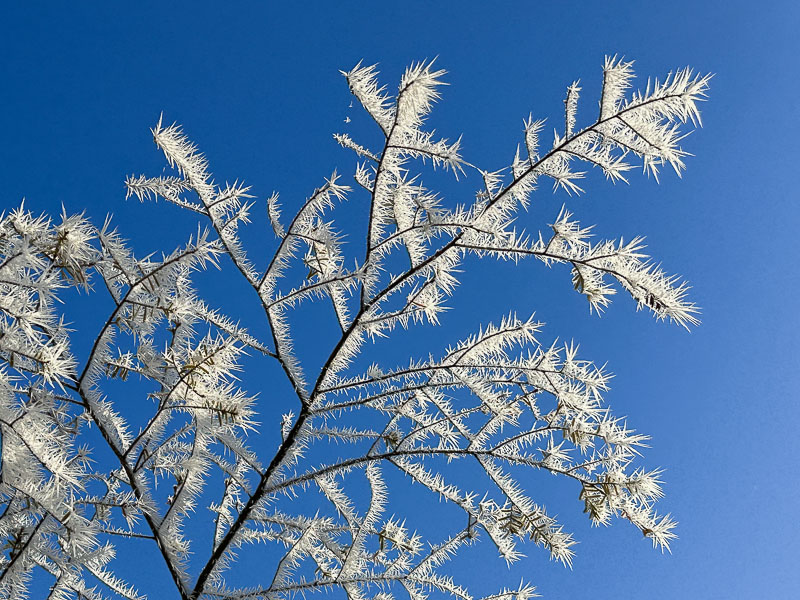
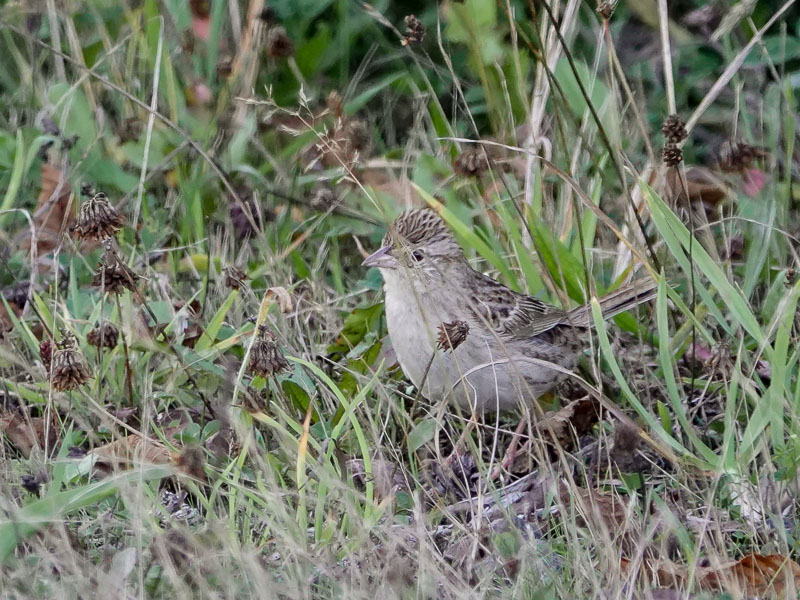
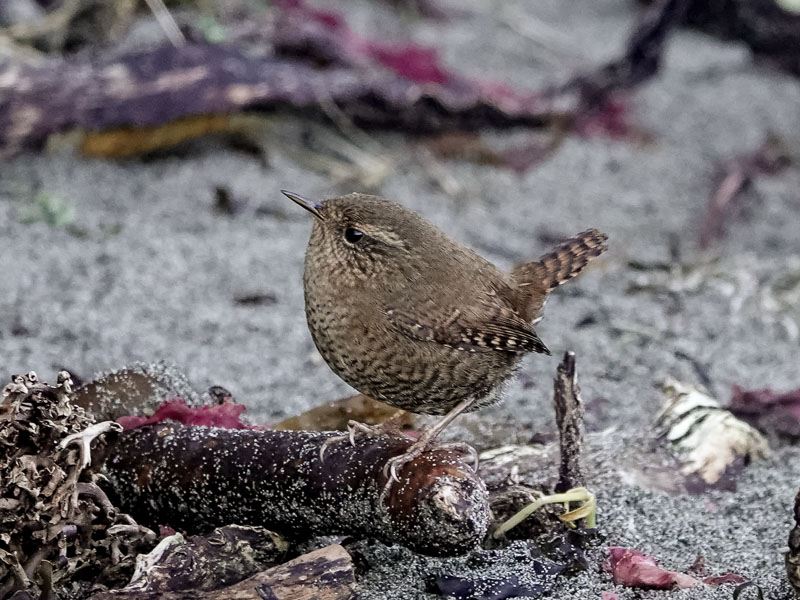
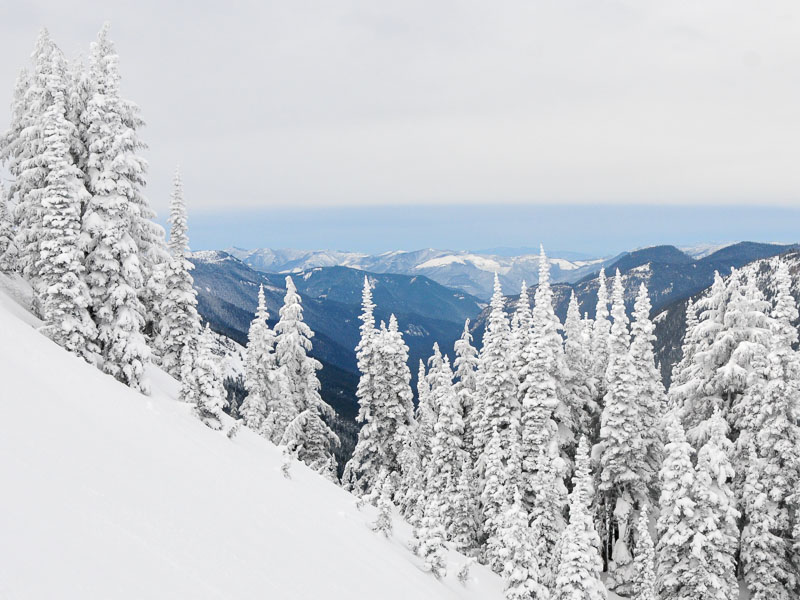 October
October
This Swamp Sparrow which Darchelle heard and subsequently spotted in a blackberry bush was the first Neah Bay sighting this season of this uncommon fall migrant. The Cassin's Sparrow in the grass in the background image is nearly as inconspicuous as the Swamp Sparrow but far less common in Washington; this individual was the first one ever recorded in the state. We were fortunate to get there in time to see it; the next morning it was gone.
2024 Calendar Although I was not excited about the project this year, Darchelle was determined to produce another iteration of our Washington Nature Calendar + so she helped me pick out photos and insert them into the calendar, a task which requires more dexterity with the mouse than I can currently manage. This is our eighth calendar and I was worried that we would not have enough calendar-worthy images but between the two of us we found a few to work with. Darchelle took 60% of them this year, mostly but not all in Washington, and I edited them. Each calendar page covers one month and has two photos, one featured on top and the other in the background behind the dates.
For the past seven years we have given calendars to friends and family for Christmas but this year, unhappy with the quality of the two samples we ordered for ourselves, I did not order the others. Maybe I'll try again next year.
Below are the photos of the calendar that wasn't, ordered by calendar page, along with a brief discussion of each one.

January: Ruffed Grouse, Okanogan Highlands

February: Long-eared Owl, Prescott WA

March: Rockpipers, Point Brown Jetty, Ocean Shores

American Bittern, Ridgefield NWR

Short-eared Owl, Samish Flats WA

Rockpipers, Point Brown Jetty, Ocean Shores
We made our annual winter pilgrimage to Okanogan County during late January this year and fared well with owls and chickens, one of which graces our January calendar page. Darchelle photographed the American Bittern in the background image late on a February afternoon at Ridgefield NWR. Both it and the Ruffed Grouse trust their cryptic coloration to conceal them from predators and therefore sometimes permit even the most dangerous predator in the region to approach within a few feet before they take evasive action.
February
In the winter Long-eared Owls tend to collect in communal roosts, usually in dense thickets or evergreens surrounded by open country, where they rest during the day before dispersing at night to hunt. The semantically and taxonomically related Short-eared Owl on the other hand often hunts during the day. Both are highly favored by photographers, perhaps due to their expressive faces.
In the winter Long-eared Owls tend to collect in communal roosts, usually in dense thickets or evergreens surrounded by open country, where they rest during the day before dispersing at night to hunt. The semantically and taxonomically related Short-eared Owl on the other hand often hunts during the day. Both are highly favored by photographers, perhaps due to their expressive faces.
March
Again this year we featured Rockpipers, in this case Surfbirds and a Black Turnstone which Darchelle photographed at Ocean Shores in early February, on our March calendar page. Reusing the subject for a second year saved us the trouble of rewriting the caption.
Again this year we featured Rockpipers, in this case Surfbirds and a Black Turnstone which Darchelle photographed at Ocean Shores in early February, on our March calendar page. Reusing the subject for a second year saved us the trouble of rewriting the caption.

April: Tidepool Life, Toleak Point WA

May: Orchard Oriole breeding plumage, Magee Marsh OH

June: House Wren, Winthrop WA

Intertidal Zone, Toleak Point WA

Orchard Oriole winter plumage, Neah Bay WA

Mountain Chickadee, Winthrop WA
The calendar images for April were from a backpacking trip David and I did on the Olympic Coast back in 2011. Although we were there in August. I figured I could use the photos for April because I don't think intertidal life changes much over the course of the year.
May
Orchard Orioles do not breed in Washington and rarely if ever show up here during the spring in their breeding plumage. This colorful male spent two entire days foraging in the Apple blossoms of a single tree at Magee Marsh, inadvertently posing for innumerable photographs. A much appreciated bird! Orchard Orioles do occasionally show up in Washington in the fall, where they elicit almost as much attention as the bird in Magee Marsh despite their less colorful plumage.
Orchard Orioles do not breed in Washington and rarely if ever show up here during the spring in their breeding plumage. This colorful male spent two entire days foraging in the Apple blossoms of a single tree at Magee Marsh, inadvertently posing for innumerable photographs. A much appreciated bird! Orchard Orioles do occasionally show up in Washington in the fall, where they elicit almost as much attention as the bird in Magee Marsh despite their less colorful plumage.
June
Over the past seven years, we have never featured a wren of any kind in the calendar and this year we have two. Go figure! I photographed the Mountain Chickadee in the same Ponderosa Pine tree as the House Wren while over in Winthrop in May 2012 for the Sun Mountain 50K race, during which I recorded 60 species of birds l+.
With their exuberant songs and perky poses, House Wrens are one of the most appealing summer residents of eastside pine forests, at least to humans. To other small cavity-nesting species like Mountain Chickadees though, they can apparently be the neighbors from hell. Per an article on the Saint Paul Audubon Society website + (corroborated to some extent by the species account on Birds of the World +):
Over the past seven years, we have never featured a wren of any kind in the calendar and this year we have two. Go figure! I photographed the Mountain Chickadee in the same Ponderosa Pine tree as the House Wren while over in Winthrop in May 2012 for the Sun Mountain 50K race, during which I recorded 60 species of birds l+.
With their exuberant songs and perky poses, House Wrens are one of the most appealing summer residents of eastside pine forests, at least to humans. To other small cavity-nesting species like Mountain Chickadees though, they can apparently be the neighbors from hell. Per an article on the Saint Paul Audubon Society website + (corroborated to some extent by the species account on Birds of the World +):
Wrens covet all nest sites on their territory, and can become fierce pillagers of other birds'
nests. This is where they run afoul of some humans. A wren will enter a nest box already in use by
another species and peck open the eggs or toss out nestlings. They're notorious for ruining
the nests of chickadees, bluebirds and tree swallows and at times, killing the adult birds.
Wrens will even peck open eggs of birds that nest out in the open, like robins and cardinals, even
though they have no use for the nest site.
Who knew!

July: White-tailed Deer Fawn, Dixie WA

August: Columnar Basalt, Mount Rainier NP WA

September: Monarch on Chrysanthemum, Andover, NH

White-tailed Deer, Vermilion River Reservation OH

East Fork Lena Creek, Valley of Silent Men WA

Eastern Comma, Umtanum Canyon WA
The White-tailed fawn was following its mother across the Biscuit Ridge Road outside of Dixie when we came around the corner. The doe bounded into the bushes while her fawn collapsed on the pavement. We found its innocent confidence in its cryptic coloration adorable but when Darchelle hopped out for a photo the fawn prudently abandoned plan A and wobbled off into the bushes after its mother. The deer in the background photo is also a Whitetail, photographed on a sunny May morning while we were looking for Yellow-throated Warblers.
August
Lava, like most liquids other than water, shrinks when it solidifies. Since the solid rock cannot stretch it cracks at regular intervals, the cracks functioning like expansion joints in concrete and forming four- to six-sided columns which run perpendicular to the surface of the flow. On the lower slopes of volcanoes such as Mount Rainier, new lava tends to flow down existing valleys. The fresh rock tends to be harder than the older rock of the ridges on either side of the valley so over time, the ridges erode away and become valleys themselves leaving the former valley-fill standing as a ridge between them. Much of the time while this is happening the valleys and ridges both, at least in Washington, are carpeted with lush coniferous forest such as that pictured in the background image.
Lava, like most liquids other than water, shrinks when it solidifies. Since the solid rock cannot stretch it cracks at regular intervals, the cracks functioning like expansion joints in concrete and forming four- to six-sided columns which run perpendicular to the surface of the flow. On the lower slopes of volcanoes such as Mount Rainier, new lava tends to flow down existing valleys. The fresh rock tends to be harder than the older rock of the ridges on either side of the valley so over time, the ridges erode away and become valleys themselves leaving the former valley-fill standing as a ridge between them. Much of the time while this is happening the valleys and ridges both, at least in Washington, are carpeted with lush coniferous forest such as that pictured in the background image.
September
The Monarch butterfly on a Chrysanthemum flower is an appropriate image for September, at least in New Hampshire. If you know butterflies you may recognize that the image of the Eastern Comma in the background is not. On Commas the hindwing turns dark over the course of the summer so this butterfly, with its bright orange hindwing, could not have been photographed in the fall. It was not. I took the photo during a hike up Umtanum Canyon near Ellensburg with my friend Tim in May of 2011 but it was only yesterday that I finally learned the name of its subject. I may not be able to hike any longer but thanks to my photos and time on the computer, I am still able to enjoy learning about the natural world I formerly explored.
The Monarch butterfly on a Chrysanthemum flower is an appropriate image for September, at least in New Hampshire. If you know butterflies you may recognize that the image of the Eastern Comma in the background is not. On Commas the hindwing turns dark over the course of the summer so this butterfly, with its bright orange hindwing, could not have been photographed in the fall. It was not. I took the photo during a hike up Umtanum Canyon near Ellensburg with my friend Tim in May of 2011 but it was only yesterday that I finally learned the name of its subject. I may not be able to hike any longer but thanks to my photos and time on the computer, I am still able to enjoy learning about the natural world I formerly explored.

October: Swamp Sparrow, Neah Bay, WA

November: Winter Wren, Rockport, WA

December: Soft Rime Ice, Rockport, WA

Cassin's Sparrow, Neah Bay, WA

Pacific Wren, Neah Bay, WA

Snow-covered Firs, Bullion Basin WA
This Swamp Sparrow which Darchelle heard and subsequently spotted in a blackberry bush was the first Neah Bay sighting this season of this uncommon fall migrant. The Cassin's Sparrow in the grass in the background image is nearly as inconspicuous as the Swamp Sparrow but far less common in Washington; this individual was the first one ever recorded in the state. We were fortunate to get there in time to see it; the next morning it was gone.
November
The November calendar page features two closely-related species of wrens, so closely related in fact that ornithologists did not recognize them as separate species until 2010. They are not easy to tell apart, at least for birdwatchers, though the birds themselves don't share that difficulty; even where their ranges overlap in northeastern British Columbia they almost never interbreed. This Winter Wren, only the second one ever identified in the state, was the object of our most recent bird chase and our 363rd species in Washington this year. The Pacific Wren in the background image was unusual in that it was on the beach; usually they prefer ferns.
The November calendar page features two closely-related species of wrens, so closely related in fact that ornithologists did not recognize them as separate species until 2010. They are not easy to tell apart, at least for birdwatchers, though the birds themselves don't share that difficulty; even where their ranges overlap in northeastern British Columbia they almost never interbreed. This Winter Wren, only the second one ever identified in the state, was the object of our most recent bird chase and our 363rd species in Washington this year. The Pacific Wren in the background image was unusual in that it was on the beach; usually they prefer ferns.
December
The correct term for the needles of ice coating every twig of this branch is not widely known. After inspecting it closely, and even doing a little research online on our phones, we concluded that it was Hoar Frost, and we got it wrong. We were actually looking at Soft Rime Ice!
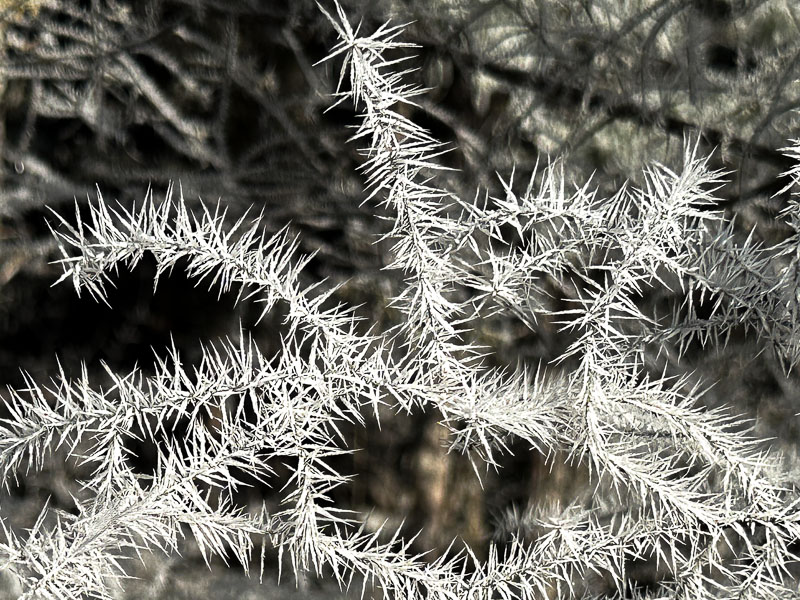
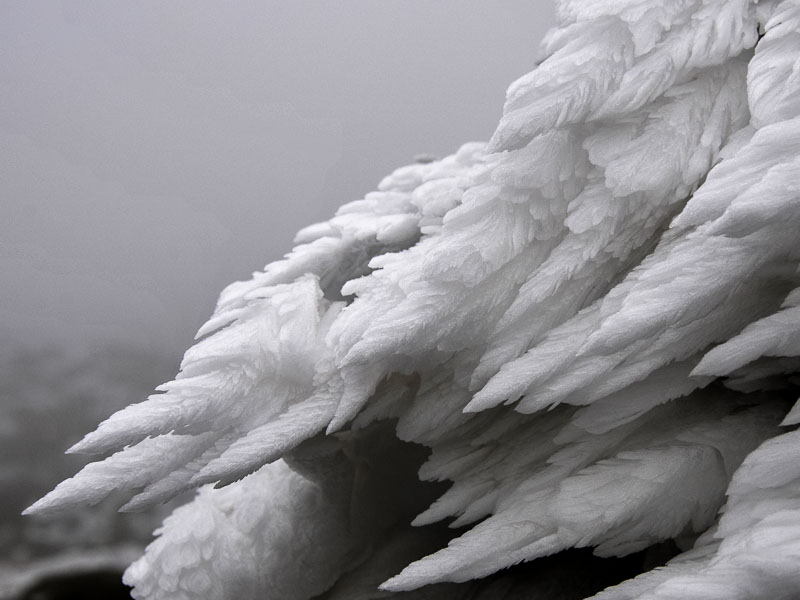
 It does not look soft; a better name for it might be Delicate Rime Ice. Even Hard Rime Ice is a bit
of a misnomer because hard rime crumbles readily, except perhaps in very cold conditions. Both types
of rime ice form only in freezing fog as the tiny droplets of supercooled water in the fog freeze onto
protruding surfaces such as vegetation, rocks, fences, utility lines and airplane wings. Soft Rime
requires still air and fog at the surface of the ground, as in valleys and other low terrain
overnight. Hard Rime forms when wind and fog occur at sub-freezing temperatures, as up in the
mountains during cloudy weather and storms.
It does not look soft; a better name for it might be Delicate Rime Ice. Even Hard Rime Ice is a bit
of a misnomer because hard rime crumbles readily, except perhaps in very cold conditions. Both types
of rime ice form only in freezing fog as the tiny droplets of supercooled water in the fog freeze onto
protruding surfaces such as vegetation, rocks, fences, utility lines and airplane wings. Soft Rime
requires still air and fog at the surface of the ground, as in valleys and other low terrain
overnight. Hard Rime forms when wind and fog occur at sub-freezing temperatures, as up in the
mountains during cloudy weather and storms.
Hoar Frost typically occurs as triangular blades of ice carpeting the surface of snow after a cold clear and still night. The crystals of ice grow directly from water vapor in the air through the process of sublimation. Their occurrence on top of snow suggests that the snow itself is the source of the water vapor since unlike ground frost, Hoar Frost doesn't usually form on bare ground or vegetation. But you probably already knew all that.
The correct term for the needles of ice coating every twig of this branch is not widely known. After inspecting it closely, and even doing a little research online on our phones, we concluded that it was Hoar Frost, and we got it wrong. We were actually looking at Soft Rime Ice!

Soft Rime Ice, Rockport WA

Hard Rime Ice, Mt Washington WA

Hoar Frost, Cameron Lakes Road WA
Hoar Frost typically occurs as triangular blades of ice carpeting the surface of snow after a cold clear and still night. The crystals of ice grow directly from water vapor in the air through the process of sublimation. Their occurrence on top of snow suggests that the snow itself is the source of the water vapor since unlike ground frost, Hoar Frost doesn't usually form on bare ground or vegetation. But you probably already knew all that.
12/09/2023 Birthday (link to here)


 Monica had a birthday and brought me chicken mole for dinner. It was delicious.
Monica had a birthday and brought me chicken mole for dinner. It was delicious.

Birthday lunch

Monica and Darchelle

Mole from Monica
12/15/2023 Home Life I (link to here)
With no more birds to chase around the state (we have seen them all already this year), we have been staying at home. We get up around 8. Darchelle wheels me out to the kitchen and asks me what kind of coffee I want then grinds the beans, fits a paper filter into our ceramic drip cone and runs hot water from our Zojiroshi onto the grounds. At that point I can sometimes pick up the fragrance of the freshly ground coffee through my ventilator but more often, I smell nothing. It is an irritating feature of the ventilator that the intake filter strips almost all odors, good and bad, from the air that I inhale. Darchelle retrieves a slender stainless steel straw from a small tray by the sink and offers me a sip of the fresh brew. It is one of the highlights of my day. I prefer coffee black and very strong, almost like espresso, so Darchelle usually gives me just the first one or two runs of water through the beans. She then pours extra water from the Zojiroshi through the grounds to make what we call the "dredges", which she will sometimes drink herself with a little cream and other times share with me if I run short.
On most mornings Darchelle prepares a laxative for me to drink with my coffee. She mixes half a dose of Clearlax, Amazon's generic version of MiraLAX, into a little of the dredges (perhaps left over from the day before) or sometimes a bit of instant coffee instead, nukes it if necessary and stirs in half a bottle of Dark Chocolate Boost. One of the drawbacks of advanced ALS is partial paralysis of the muscles responsible for peristalsis. The result of that is constipation to die for, or more accurately, to die from. That's how it felt anyhow, before my physician and I worked out this laxative protocol. In coffee with the chocolate drink, it tastes pretty good too.
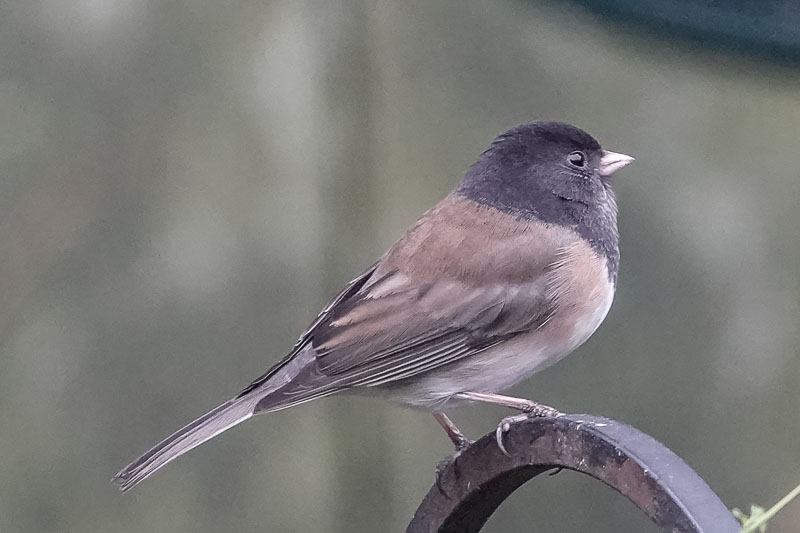
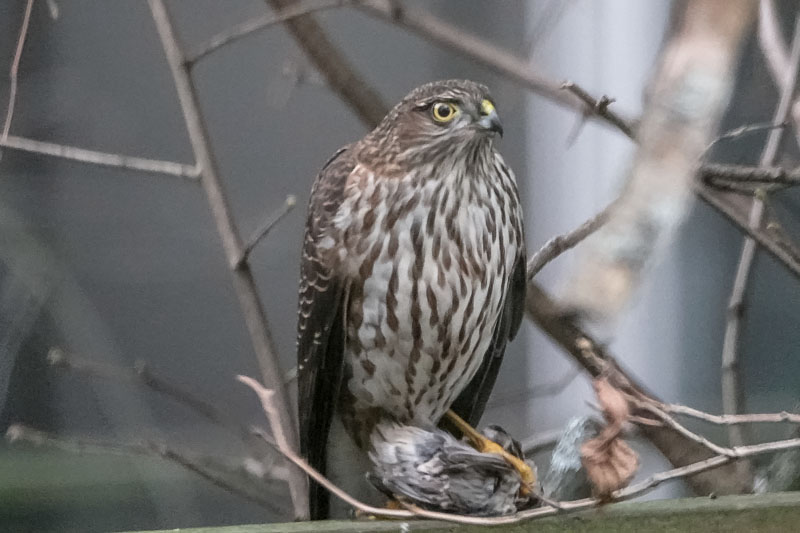
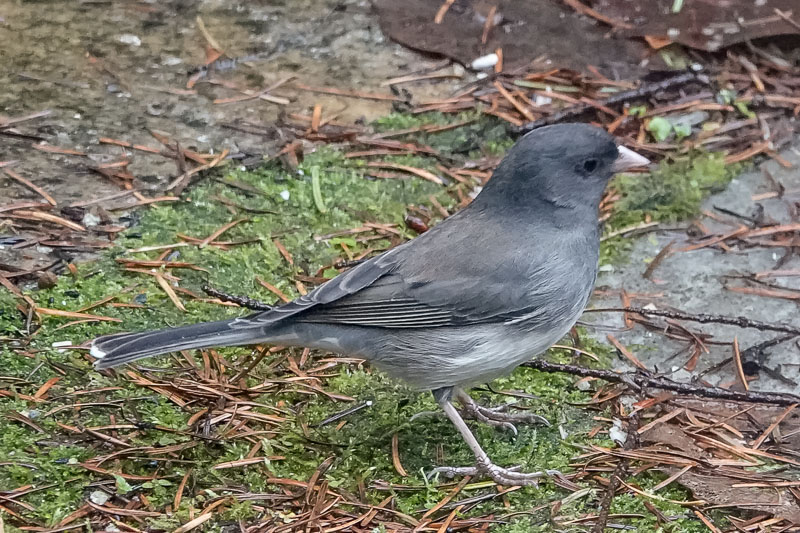 Darchelle carries my essential fluids over to the little table by the French doors which overlook
the backyard birdfeeders then wheels me over there after them. Sometimes she brings breakfast too,
perhaps a soft scramble with green chilies or a fruit and kefir smoothie or maybe just buttered
toast or half a croissant. Typically we sit there for the next hour and often longer, watching the
birds while I work my way through breakfast. Usually we do a checklist on which we record as many
as 50 individuals and 20 different species of birds, and sometimes a rat as well. We recognize some
of the individual birds and even have names for a few of them. We have names for the rat too, which
has so far managed to evade the traps Darchelle has set out for it. We think we might have more
than one because the rat this morning appeared smaller than the one a few days ago, and did not
chase the birds around the way that one did.
Darchelle carries my essential fluids over to the little table by the French doors which overlook
the backyard birdfeeders then wheels me over there after them. Sometimes she brings breakfast too,
perhaps a soft scramble with green chilies or a fruit and kefir smoothie or maybe just buttered
toast or half a croissant. Typically we sit there for the next hour and often longer, watching the
birds while I work my way through breakfast. Usually we do a checklist on which we record as many
as 50 individuals and 20 different species of birds, and sometimes a rat as well. We recognize some
of the individual birds and even have names for a few of them. We have names for the rat too, which
has so far managed to evade the traps Darchelle has set out for it. We think we might have more
than one because the rat this morning appeared smaller than the one a few days ago, and did not
chase the birds around the way that one did.
With no more birds to chase around the state (we have seen them all already this year), we have been staying at home. We get up around 8. Darchelle wheels me out to the kitchen and asks me what kind of coffee I want then grinds the beans, fits a paper filter into our ceramic drip cone and runs hot water from our Zojiroshi onto the grounds. At that point I can sometimes pick up the fragrance of the freshly ground coffee through my ventilator but more often, I smell nothing. It is an irritating feature of the ventilator that the intake filter strips almost all odors, good and bad, from the air that I inhale. Darchelle retrieves a slender stainless steel straw from a small tray by the sink and offers me a sip of the fresh brew. It is one of the highlights of my day. I prefer coffee black and very strong, almost like espresso, so Darchelle usually gives me just the first one or two runs of water through the beans. She then pours extra water from the Zojiroshi through the grounds to make what we call the "dredges", which she will sometimes drink herself with a little cream and other times share with me if I run short.
On most mornings Darchelle prepares a laxative for me to drink with my coffee. She mixes half a dose of Clearlax, Amazon's generic version of MiraLAX, into a little of the dredges (perhaps left over from the day before) or sometimes a bit of instant coffee instead, nukes it if necessary and stirs in half a bottle of Dark Chocolate Boost. One of the drawbacks of advanced ALS is partial paralysis of the muscles responsible for peristalsis. The result of that is constipation to die for, or more accurately, to die from. That's how it felt anyhow, before my physician and I worked out this laxative protocol. In coffee with the chocolate drink, it tastes pretty good too.

Dark-eyed Junco (Oregon), Ravenna, Seattle

Sharp-shinned Hawk with prey, Ravenna, Seattle

Dark-eyed Junco (Cassiar), Ravenna, Seattle
12/24/2023 Home Life II (link to here)
Yesterday we watched the Sabbath service at the Green Lake church on Darchelle's laptop. The sermon was about the significance of names, in particular the name Immanuel which in the Bible means "God with us". Addressing the implications of that statement, the pastor pointed out that in order to be "with us" God became a human infant and in so doing made Themselves (my pronoun for God, who is apparently non-binary, but I digress) entirely dependent on his (my pronoun for Jesus, who was apparently male) human mother for care. Even when she was sleeping or otherwise occupied, if Jesus wanted or needed anything, he had to get Mary to provide it for him.
I know what that is like. Being effectively quadriplegic I am entirely dependent on Darchelle, day and night, 24 X 7. If I need to roll over in bed during the night, I have to wake her up to move my legs and torso. If I need to pee, I have to ask her to get the pee bottle and hold it in position for me and if she is unavailable, I have to hold my pee until she can help me. If I want to see who is behind me I have to ask her to turn me around so I can look in their direction. It is a testament to Darchelle's love and care for me that I am able to be comfortable with the level of dependence on another person, most of the time. Once in a while though, it can be frustrating and occasionally, even quite frighening.
Usually Darchelle wakes up almost immediately when I ask her for help during the night. The other evening though, she did not. I awoke in the darkness because my hip was aching from the pressure of lying on my side for the previous hour or so. "Hey D", I asked, "Can you help me roll onto my back?" No response. I asked again. Still no response. I waited a minute, asked again, same result. After several minutes I began to wonder if she was still in bed with me. Because of my ventilator I could not hear her breathing. I tried feeling for her with my foot but could not move it far enough to tell if she was there. I called for her as loud as I could but my voice was muffled by the pillow. A twinge of alarm began to stir in my chest. What if something had happened to her? What would I do? What could I do? Then she woke up.
Listening to the sermon, I wondered what God really experienced to become "with us". Presumably when a baby wakes up during the night and mother is apparently not there, the baby cannot imagine what might have gone wrong and what might be the consequences if something had gone wrong, though that might not make the experience any less alarming. According to the story though, Jesus was not just a baby; he was also God. Did They then know through the baby Jesus the terror of waking up uncomfortable, helpless and alone in the darkness?
Things that go through my mind while waiting for Darchelle to give me a sip of coffee...


 Actually Darchelle's mother Donna has been helping me with my coffee. She and Richard are visiting
for Christmas, joining Darchelle and me in our morning ritual of watching the birds at the
backyard feeders l+,
helping me to eat and Darchelle to wash dishes. Richard and I play his daily game of
Wordle +
and even in our combined brilliance fail to rise above the range of average. But we have fun.
Actually Darchelle's mother Donna has been helping me with my coffee. She and Richard are visiting
for Christmas, joining Darchelle and me in our morning ritual of watching the birds at the
backyard feeders l+,
helping me to eat and Darchelle to wash dishes. Richard and I play his daily game of
Wordle +
and even in our combined brilliance fail to rise above the range of average. But we have fun.
Yesterday we watched the Sabbath service at the Green Lake church on Darchelle's laptop. The sermon was about the significance of names, in particular the name Immanuel which in the Bible means "God with us". Addressing the implications of that statement, the pastor pointed out that in order to be "with us" God became a human infant and in so doing made Themselves (my pronoun for God, who is apparently non-binary, but I digress) entirely dependent on his (my pronoun for Jesus, who was apparently male) human mother for care. Even when she was sleeping or otherwise occupied, if Jesus wanted or needed anything, he had to get Mary to provide it for him.
I know what that is like. Being effectively quadriplegic I am entirely dependent on Darchelle, day and night, 24 X 7. If I need to roll over in bed during the night, I have to wake her up to move my legs and torso. If I need to pee, I have to ask her to get the pee bottle and hold it in position for me and if she is unavailable, I have to hold my pee until she can help me. If I want to see who is behind me I have to ask her to turn me around so I can look in their direction. It is a testament to Darchelle's love and care for me that I am able to be comfortable with the level of dependence on another person, most of the time. Once in a while though, it can be frustrating and occasionally, even quite frighening.
Usually Darchelle wakes up almost immediately when I ask her for help during the night. The other evening though, she did not. I awoke in the darkness because my hip was aching from the pressure of lying on my side for the previous hour or so. "Hey D", I asked, "Can you help me roll onto my back?" No response. I asked again. Still no response. I waited a minute, asked again, same result. After several minutes I began to wonder if she was still in bed with me. Because of my ventilator I could not hear her breathing. I tried feeling for her with my foot but could not move it far enough to tell if she was there. I called for her as loud as I could but my voice was muffled by the pillow. A twinge of alarm began to stir in my chest. What if something had happened to her? What would I do? What could I do? Then she woke up.
Listening to the sermon, I wondered what God really experienced to become "with us". Presumably when a baby wakes up during the night and mother is apparently not there, the baby cannot imagine what might have gone wrong and what might be the consequences if something had gone wrong, though that might not make the experience any less alarming. According to the story though, Jesus was not just a baby; he was also God. Did They then know through the baby Jesus the terror of waking up uncomfortable, helpless and alone in the darkness?
Things that go through my mind while waiting for Darchelle to give me a sip of coffee...

Donna and Richard

Tamales for supper

Collecting DNA
12/31/2023 New Year (link to here)
 We wrap up the year with 105,611 miles on the car, having added just 123 miles during December. I
did not leave the house all month. Neither we nor Liam nor Maxine added any species to our year
lists because no
new birds showed up in the state after the Thanksgiving weekend. We submitted 22
complete checklists to eBird in December, giving us a total for the year of 534 which exceeds our
second highest previous total by more than 80. Our species total for the year of 363 is the sixth
highest state big year total of the past decade and perhaps seventh highest ever. We did well but
Liam did better, setting a new
Washington state big year record this year with his 378 species.
We wrap up the year with 105,611 miles on the car, having added just 123 miles during December. I
did not leave the house all month. Neither we nor Liam nor Maxine added any species to our year
lists because no
new birds showed up in the state after the Thanksgiving weekend. We submitted 22
complete checklists to eBird in December, giving us a total for the year of 534 which exceeds our
second highest previous total by more than 80. Our species total for the year of 363 is the sixth
highest state big year total of the past decade and perhaps seventh highest ever. We did well but
Liam did better, setting a new
Washington state big year record this year with his 378 species.
Regarding our county birding efforts this year, Darchelle and I both reached 100 species in each of Washington's 39 counties, becoming on July 15 in Franklin County the 37th and 38th birders to achieve that goal.
We celebrated the conclusion of a successful year by ordering takeout for the last time from Junebaby, a popular restaurant around the corner from us which is closing tomorrow night+.
We did not celebrate the arrival of the new year. What's to celebrate about a new year in which due my increasing disability we will probably lose our freedom to travel around the state and country together birding, a year in which I may lose my ability to speak and along with my voice, my ability to communicate with friends and family, to write, to work with photos and to retrieve information from the Internet, a year in which death by suffocation is a frightening prospect and in which I may abandon the woman I love to deal with grief and loss without me? Of course one year ago I was probably thinking some of the same thoughts and here we are, so who knows?

Last Supper from Junebaby
Regarding our county birding efforts this year, Darchelle and I both reached 100 species in each of Washington's 39 counties, becoming on July 15 in Franklin County the 37th and 38th birders to achieve that goal.
We celebrated the conclusion of a successful year by ordering takeout for the last time from Junebaby, a popular restaurant around the corner from us which is closing tomorrow night+.
We did not celebrate the arrival of the new year. What's to celebrate about a new year in which due my increasing disability we will probably lose our freedom to travel around the state and country together birding, a year in which I may lose my ability to speak and along with my voice, my ability to communicate with friends and family, to write, to work with photos and to retrieve information from the Internet, a year in which death by suffocation is a frightening prospect and in which I may abandon the woman I love to deal with grief and loss without me? Of course one year ago I was probably thinking some of the same thoughts and here we are, so who knows?